

DISCOVER new collection IKLIN | PAOLA www.carismacollections.com The PROMISE Rings WOMEN’S DAY Special
New Year New Challenges
A new year with new challenges, new opportunities, new dreams, new ideas, new concepts. A new year with recurring challenges, recurring issues. The war in Ukraine as well as the recession looming on all corners of the planet are some of the recurrent international challenges that keep on affecting every industry and above all, our work, our habits, our free time and our life. Yet as the saying goes, “every challenge is an opportunity, a chance to grow, a lesson to learn, a part of life.” And on this premise we keep on striving for a better today and above all for a better tomorrow.
Publishing Editor Omar Vella

Design Robert Caruana info@unionprint.com.mt
Printing & Publishing Union Print Co. Ltd www.unionprint.com.mt
Proof Reading
Ramona Vella Cini
FRONT & FEATURE PHOTOS
Photographer: Matthew B Spiteri
Model: Stephanie Hodgkins Models M
Fashion stylist: Maria Micallef
Hair: Vanusia Mifsud
Make up: Elaine Galea
Flowers: Lilly Poppy
Location and Wedding Gowns: Ivory & Co
Disclaimer:
Particular attention has been given to ensure that all the content of this magazine is correct and up to date as on date of issue. The views expressed in the articles, interviews and photogrphs are those of the authors and are not neccessarily endorsed by the publisher. While every care has been taking during production, the publisher does not accept any liability for errors that may have occurred. Copyright © 2023.
1
 Watch: Piaget lady’s - Polo Collection
Watch: Piaget lady’s - Polo Collection
2
Jewellery: Diamond necklaces design by Diamonds International
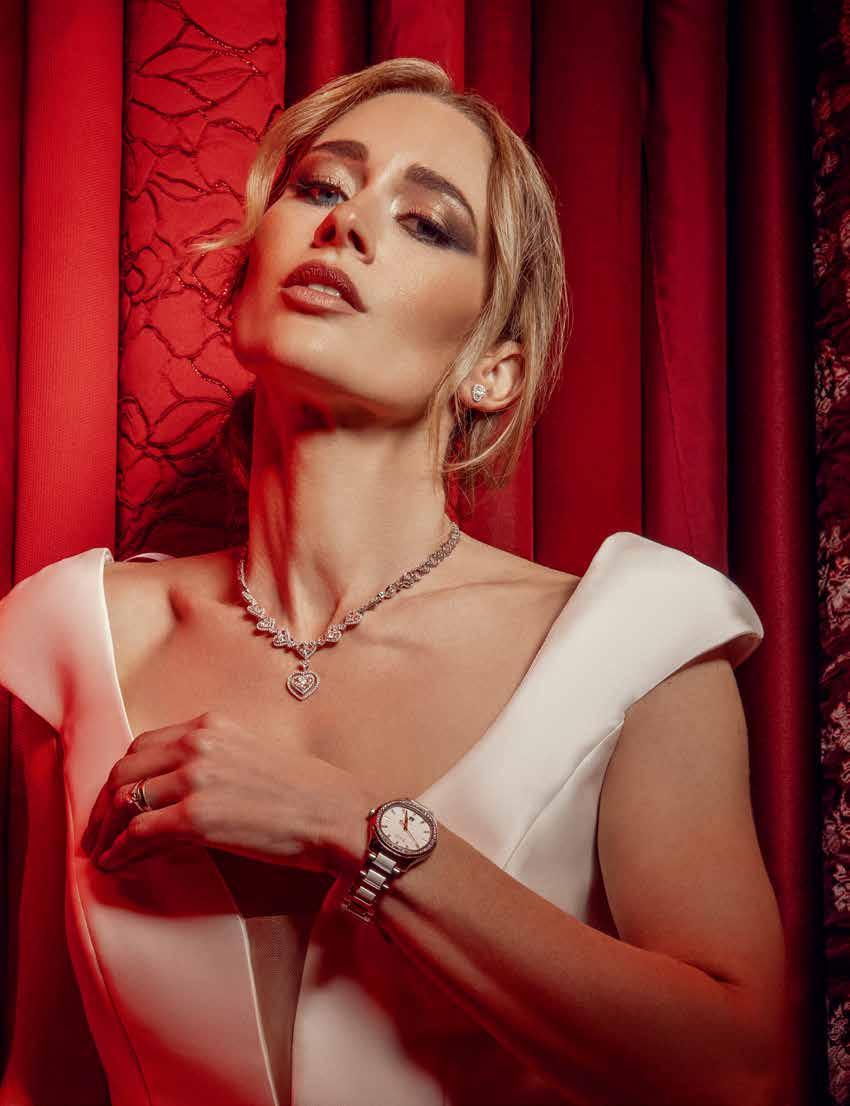
3

4
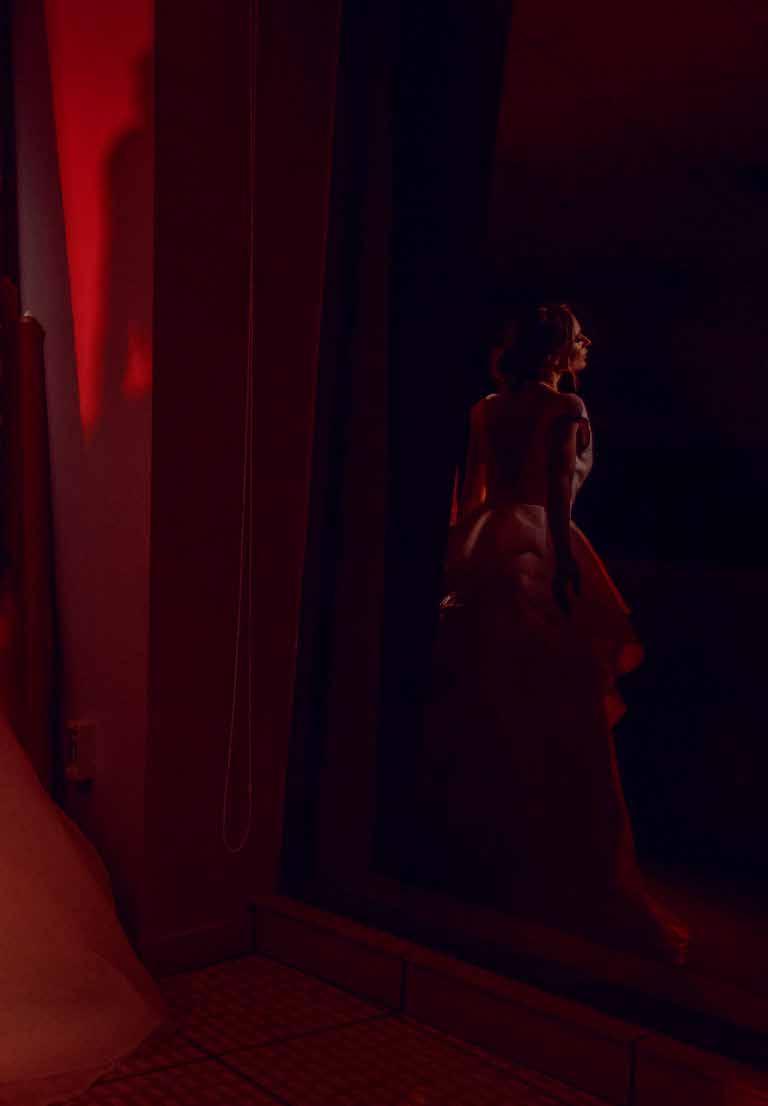
5
Jewellery: Damiani Belle Epoque Collection

6
Jewellery: Mikimoto necklace & earrings - South Sea Pearl Collection

7

8
Jewellery: Fope necklaces & bracelets - Luna Collection

9

10

11
Jewellery: Etho Maria aquamarine & diamond necklace, bangle & earings
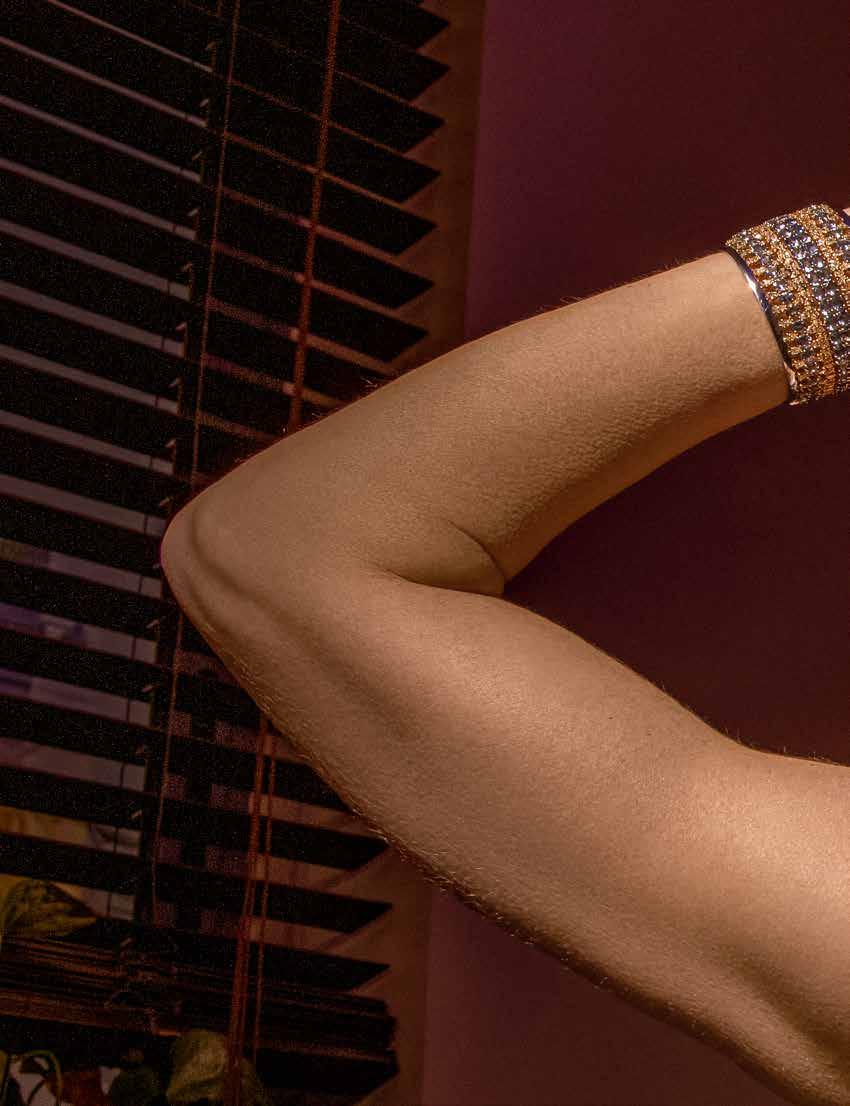
12
Jewellery: Etho Maria aquamarine & diamond necklace, bangle & earings

13



DESIGNED TO EMPOWER WWW.MVINTAGE.COM
Wintermoods frontman Ivan Grech is a giant not only in stature but also in what he has achieved over the past decades as an outstanding singer with his iconic and soulful voice and songwriter in his own right. Truly so, because it is widely acknowledged that Ivan is one of the best talents the local music industry has ever produced. But more than just being a giant in all senses, Ivan is a gentle giant because behind that imposing figure and strong voice lies a soft-heart. Behind that popular face lies a sensitive, emotional and kind hearted person. Ivan shares with Atelier his own career, the highs and the lows, and what’s next for him.
GIANT
16

17
Interview with Ivan Grech
What does music mean to you?
Music is basically fuel to my life, it’s something I cannot live without.
Music makes up the soundtrack of my journey in this world, songs take me to memories, songs are connected forever to certain moments in time. Music has also been my bread and butter for many years.

18
You are one of longest standing names in Malta’s music scene. How has the local music industry evolved over the past decades?

The local music scene pretty much evolved with what was going on globally, especially the UK, USA and Italy in our case too. It was about what we were exposed to at the time and what got us inspired. I’ve lived through different eras, I’ve seen bands and artists come and go, rise and fall. We’ve all had our favourite bands, different tastes, different genres, idols and heroes, some of whom have left an eternal mark in music history.
The Music scene in Malta held on to its roots, even when roaming into different ideas, styles and sounds, local talent was ever present and considering its disadvantages the local scene produced worthy, valid artists and works along the years. Then, the strength of new ever evolving technology took over, it changed the course of music in good and in bad. Technology made tools for making music much more reachable and available. This was a good step, opening new doors for artists, bands, musicians and producers. Producing and getting one’s work out there to the world was made easier but in most cases with the consequence of lacking heart, passion and commitment to it all. Music like everything else was dragged into the unforgiving exposure of mass media, everything changed, a fast paced scene that in many ways is all about quantity and not quality, it’s not about how much heart and passion goes into creativity, it’s about HOW MANY productions are released in a short period of time. Nevertheless there’s still loads of amazing heartfelt music out there and of course, locally, upcoming talent never ceases to amaze me.
Tell us about your backstory. How did you get into music? Music has been part of me from as far as I can remember, music was very much around and alive in my family. I am the youngest of six and in one way or another, all of us were brought up with music in our background. I was always attracted to the vibe that sounds and melodies create and from my early days I deeply connected to music, it kind of effected my moods and triggered a whirlwind of emotions and still does to this day.
What does music mean to you?
My music is where I express what I’ve been through, who I am and where I’m coming from. Everything is there in and in between the lines. It’s the place where I can share my heart and sing passionately bearing my soul. Music is my ever present life companion.
Bono once noted, “Music can change the world because it can change people.” How can music contribute towards a better society? Music can bring people together, a message can resonate stronger through words and messages entwined with sounds and melodies that trigger true emotions. Music is a good source for getting a statement, idea, opinion through to those listening, it’s a strong medium to raising awareness on subjects and contribute to charities too, balance is also an important key in these regards.
Is There a better appreciation by society towards local talent in the music industry?
As I mentioned before, being on a small island with a relatively small population is a bit of a disadvantage to local artists especially with regards to live performances and exposure but with that said I surely acknowledge that good local artists are actually appreciated and respected through hard work and of course true talent can build a following, I certainly cannot complain about the appreciation and respect from the locals along my musical journey, the amazing support throughout the years, especially with Winter Moods were a true inspiration.
What’s next for you?
Music, Music and more Music, recording and sharing new songs with the people out there, I’m having a blast performing and still attracting big crowds to my concerts. The connection with the crowds at my concerts is what it’s all about, it is the measure that tells me if my music, my songs, my performances are still relevant, it’s what makes it all worthwhile.
19
The stylist from Burgos, with her distinct pink hair, has been in charge of catwalk hair and makeup for over a decade. Her curriculum is impressive, including numerous fashion editorials for leading publications, as well as projects in advertising and in the audiovisual sector. Her portfolio also includes working with leading actresses and other well-known faces such as Amaia Salamanca, Elsa Pataky, and Shakira. The celeb-loving stylist talks to Atelier about her journey and what it’s like to work in all areas of the beauty industry.
If you could go back and give your younger self any bit of beauty advice, what would it be? What’s next for your career?
If I changed any ingredient in my recipe, nothing would be what it is today, I’m not talking about perfection in my decisions, but I am talking about the fact that even if I reviewed my mistakes, I believe that they were also necessary to become who I am.
Interview with Beatriz Matallana
Style
20
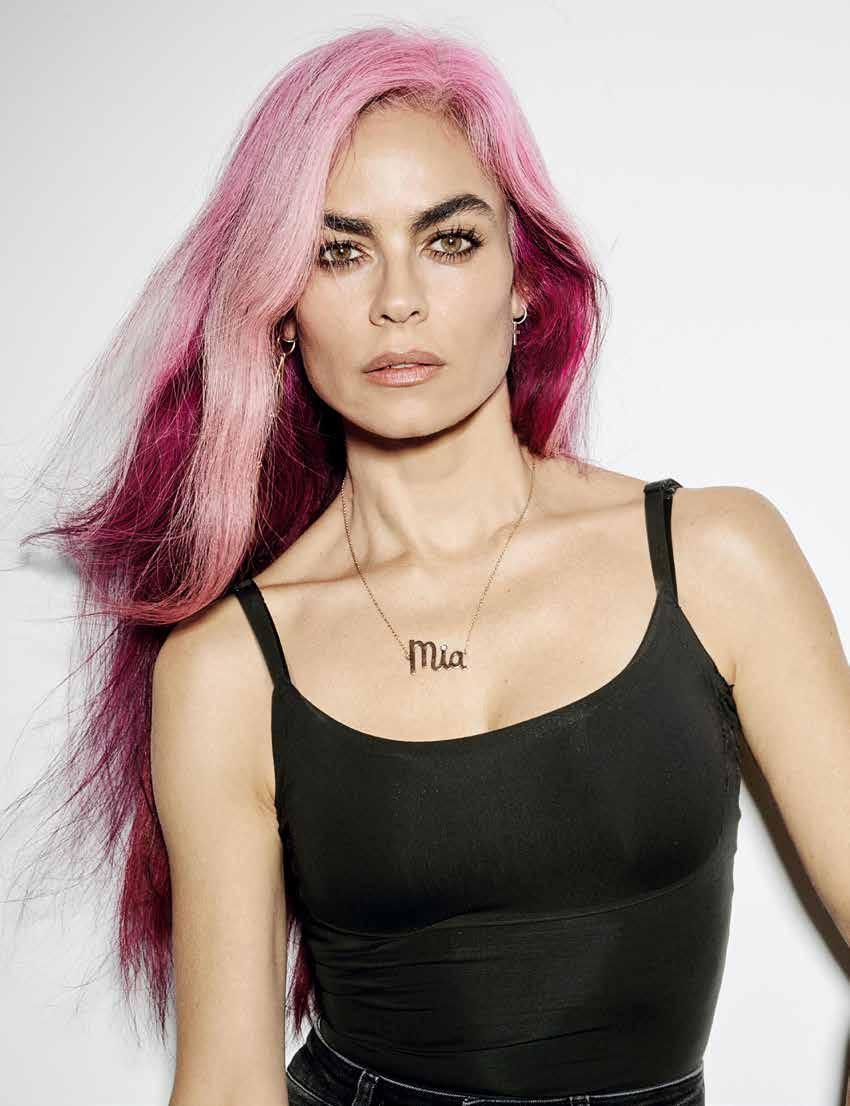
21
Photo: @valero_rioja
What keeps you creatively inspired?
I am in permanent contact with life, throughout the day I discover details of beauty that inspire me, there are always singularities in everything if one looks closely, that unleashes my creativity, stimulating me to create
What is the most important beauty advice that you can give to both men and women?
Betting on yourself in your own identity is beauty, demonstrating uniqueness and believing that beauty changes the world makes us show ourselves in an authentic way.
What’s your mantra?
Do what you like, committing to what you like.
How would you describe your signature look and what is it about your style that sets you apart?
Sometimes it is difficult for me to define myself, but I would say that I am a person who is passionate about her time and her moment, and that is reflected in my appearance, my thinking, the way in which I create.

22
Shakira Photo: @jaumedelaiguana
If you could pin your success down to one thing or one best moment, what would that be?
I believe that success is doing what you know you should do.
Can you talk us through your career?
What inspired you to go into the beauty space?
Since I was little I felt the call of beauty, I collected magazine clippings, did my brothers’ hair and makeup and I was always inspired by the work I saw on television and in magazines above all.
My career began in a small hairdressing salon in a relatively small city. As soon as I felt that I had stopped learning, I left. My destination was Madrid, where I started from the bottom helping great talents, until I was able to start developing my work on my own. discovering my own way of expressing myself.

23
Paz Vega Photo: @jmferrater

24

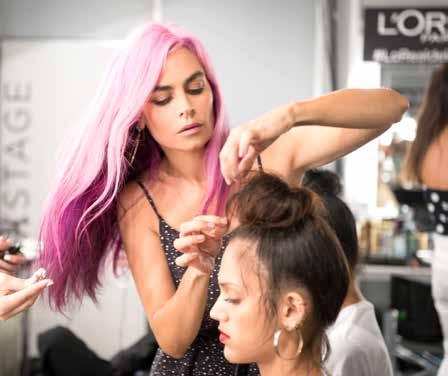
25
Pietà, Malta 178, Marina Str.
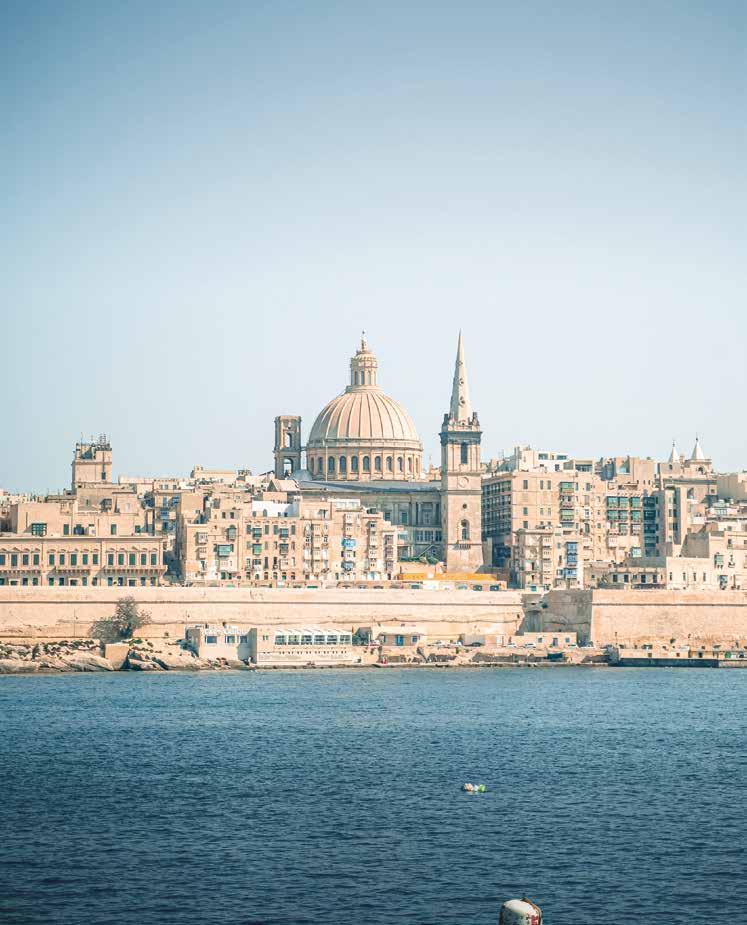
+35620103715
+35620102949
+35621222949

Floriana, Malta 31/32, St. Anne Str. +35621233715
King Salman International Airport in Riyadh

a colourful dimension
Interview with Paul Eis
Berlin-based photographer Paul Eis stages classical architecture through photography, mixes different styles and digitally processes his photos into intense worlds of colour. The abstract aesthetics of the young artist’s photographs already led him to more than 40,000 followers on Instagram. In the photography project “A colourful makeover of architecture” from 2015, he raises the question of why our cities have become so grey, monotonous and hostile to life and if it might not be about time to make them friendlier, livelier, simply more colourful. The images of the social media project have been published and exhibited internationally, most recently at the Architecture Biennale 2021 in Venice.
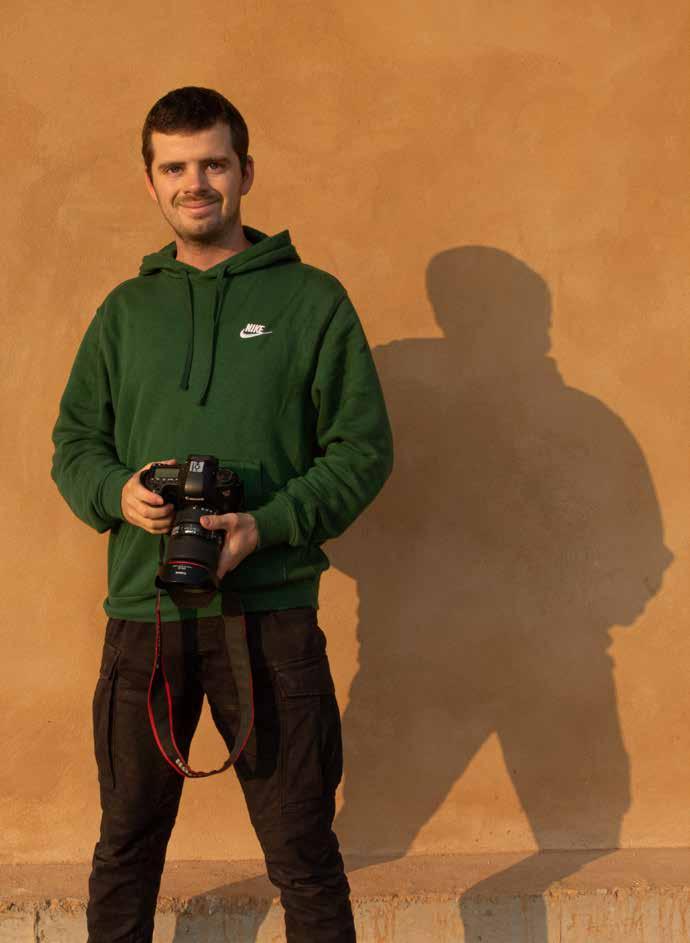
28
When did your interest in photography start?
I always had a camera with me since I was a child. When I was about 15, I became more and more fascinated with photography beyond just taking holiday photos. The opportunities of digital image manipulation were always particularly interesting to me, as they made it possible to create my own worlds beyond documentation, which were based on reality but could contain completely new ideas, atmospheres or stories.

29
a colourful dimension

What makes architecture interesting from a photographic point of view? 30
Architecture surrounds us at almost all times. And unlike when being in nature, everything in it is man-made. There is nothing that is random in it, only that its structures can be more or less complex.
I think that is what makes architecture so interesting for me to photograph: it is thoughts cast in geometry and matter. And I can play with these as a photographer. I can use perspective to reinforce the geometry, can play with materiality and atmosphere, can bring out the ideas of the architects.
But just as well I can transform buildings, implement my own thoughts in them and thus enter into a dialogue with the architecture.
As a young architect, I am always caught between what has already been built and the future I imagine, so architectural photography is a good tool for me to express and spread my ideas.

31
a colourful dimension
What makes Berlin, (Hamburg and other cities) interesting themes for your shots?
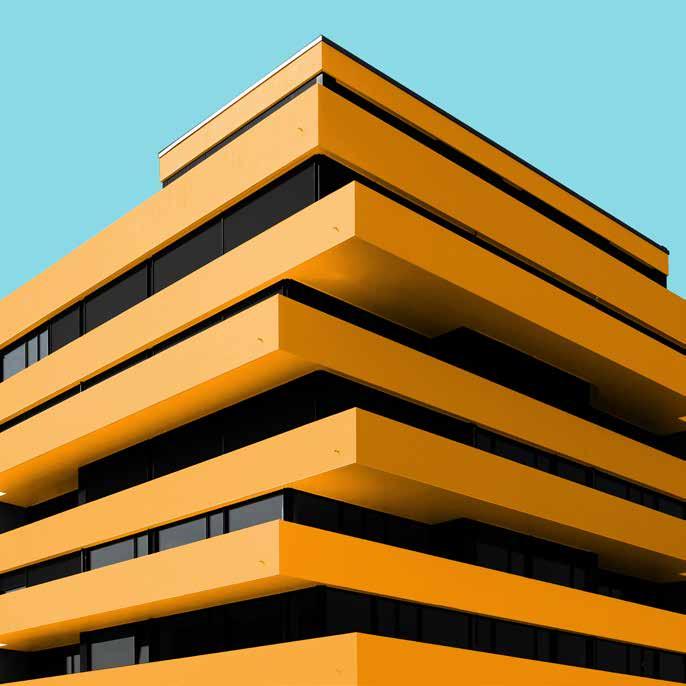
32
Overall, the phenomenon of grey, modern architecture is something that can be found all over the world. Berlin, however, represents an exceptional role for me because I grew up there and thus have a very deep connection with the local architecture.
What particularly inspired me in Berlin goes back to its division during the Cold War, which can still be felt today. While the architecture in the western part was very diverse and also colourful, the eastern part is dominated by monotonous, grey prefabricated buildings that fascinated me particularly from a photographic point of view. Because of their strict geometric grid in their façade and the seemingly endless repetition, they are fantastic objects for architectural photography. And because their size makes them seem almost abstract, they are the perfect canvas for playing with the architecture photographically.

33
a colourful dimension
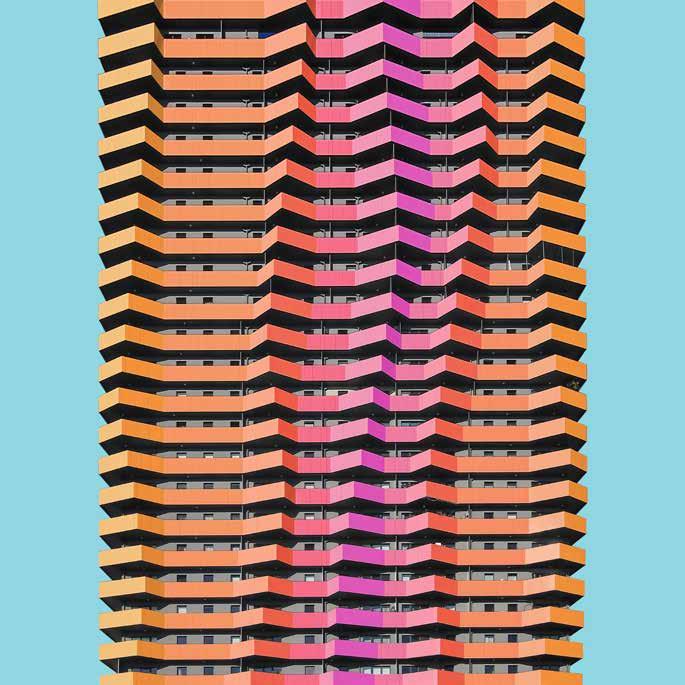
What brought about the interest in adding colour to these buildings?
34
The colour originally came to the buildings because I was looking for a method to help the above-mentioned monotonous prefabricated buildings gain more creative variety and individuality and thereby give them a more friendly, lively feeling.
Because as time went by, I still had fun playing with their geometry, but the colour gave me the opportunity to make the hard shapes more playful and to create different atmospheric ambiences. After I got a lot of good feedback with the pictures of the coloured prefab buildings, I decided to expand the project to many different types of architecture and transform all kinds of grey buildings.

35
a colourful dimension
Why do you use the same background in your photos?
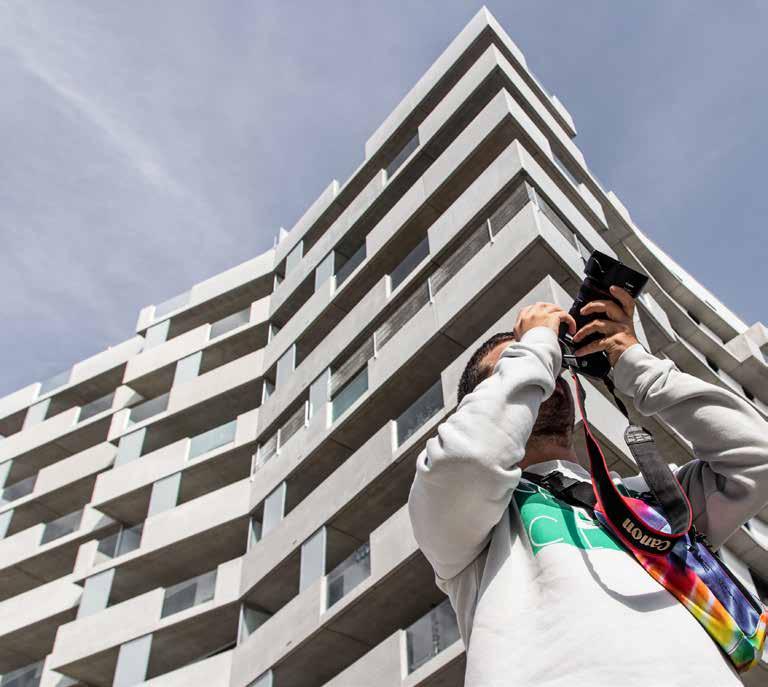
36
With the monochrome background, my aim is to highlight the buildings as sculptural objects in themselves. I don’t want a background that might be distracting and thus draw the focus to the architecture itself. Of course, at first glance it may sound contradictory to isolate the architecture from its context. But I want to emphasise with my work how important it is to see buildings as unique works of art. Furthermore, the coloured background is a good element of recognition to make the series appear as a whole, which is especially important in social media.
What does colour mean to you?
I think colour is an absolutely underestimated tool in European architecture. There is a lot of talk about form and function, but how a building is finally perceived in the urban space is rarely a topic. Yet it is incredibly important that urban spaces appear diverse and friendly so that they are accepted as liveable by their inhabitants. In the past, many mistakes were made in this regard, cities were largely concreted over with functional grey boxes, so that cities are often perceived as ugly and depressing.
With my pictures I would like to show how with the use of colour faceless rational buildings can express joy and individuality and give cities a positive character.
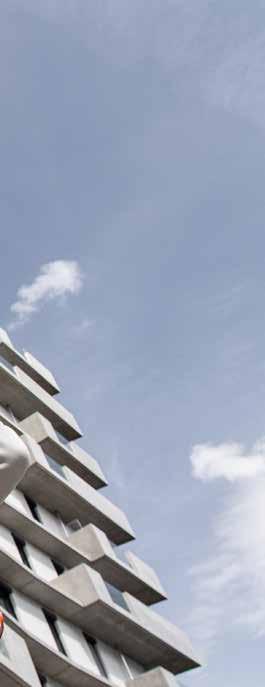
What next for you?
Basically, I mainly want to go into architecture so that I have the opportunity to create real spaces in the future. Nevertheless, the relationship to photography is still important to me, because in addition to creating architecture, I am also very interested in its communication through the media.
In addition to this project, I am now also pursuing several other photographic projects that deal differently with the character of architecture and façades and have been part of international exhibitions both in the past and in the future, for example in the USA, Indonesia and in Venice as part of the Architecture Biennale 2021.
37
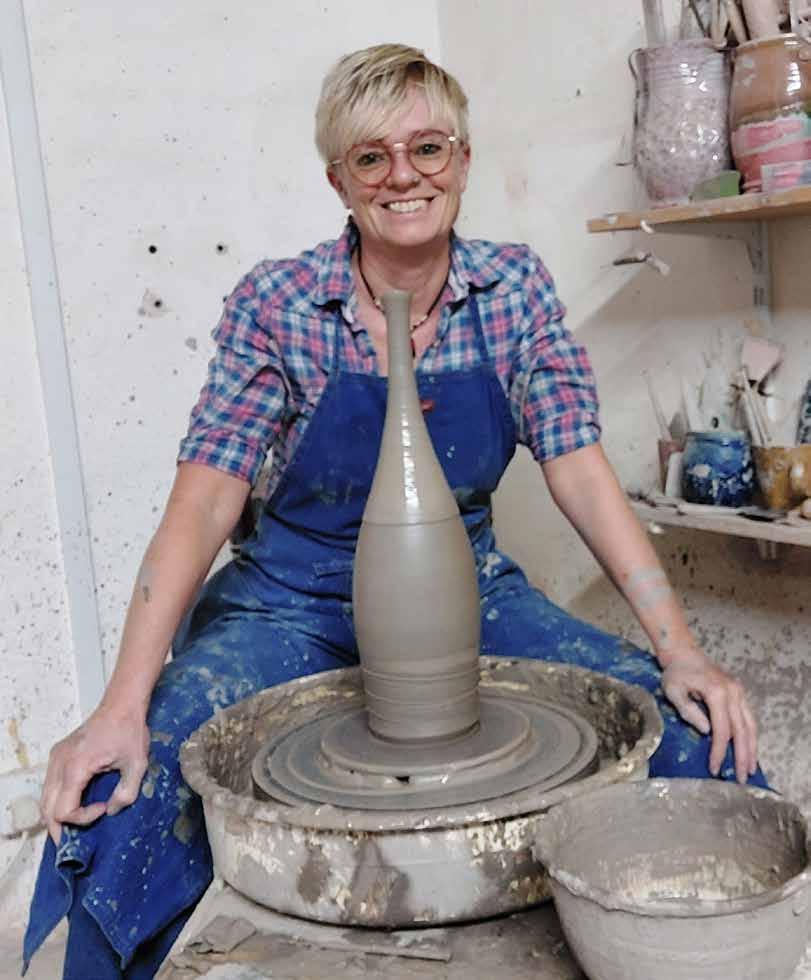
38
The art of wheel throwing
Whilst dining at a local eatery you will easily come across Sue Mifsud’s imprint. Whether it is an original plate or a distinct cup, Sue’s touch is visible on any dining table. Her work stems out for its pronounced earth colours and for the impressive detail each item encapsulates. Every concept she works on is a work of art which highlights the passion and drive Sue has for her profession. Busy preparing her endless list of orders, Sue shared with us her love for wheel throwing, her plans for the future, and how her product creates a perfect match with food.
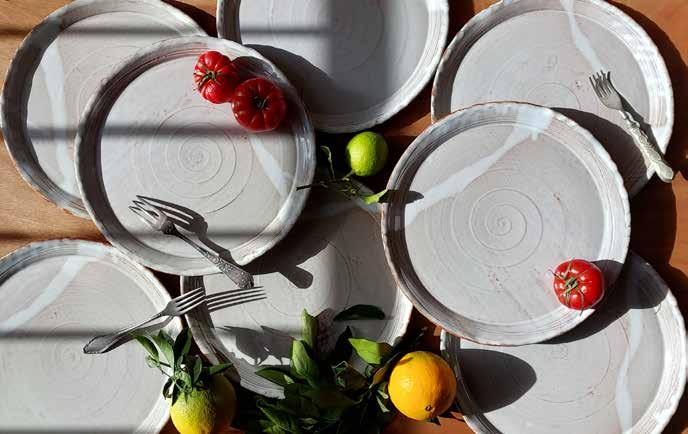
39
What attracted you to the art of wheel throwing?
There are few things in life more satisfying than seeing a piece of clay perfectly centred on a potter’s wheel and being transformed from a mud like blob to a recognisable functional object. The clay will initially be misshaped from kneading it, to remove any air from the body and create a spiral pattern in the clay particles, and with the correct amount of pressure applied through the potters hands the clay is then manipulated through a series of well practised techniques into an object that will have purpose. Although the full making process from raw clay to ceramic object is lengthy the initial making stage is relatively quick which I find very gratifying, my short attention span is happy with
this working arrangement. There are a couple of working methods in ceramics used to produce functional ware e.g. slip casting and hand building, but throwing is the most a person will be involved with the medium and is by far the dirtiest which appeals to my tactile nature.
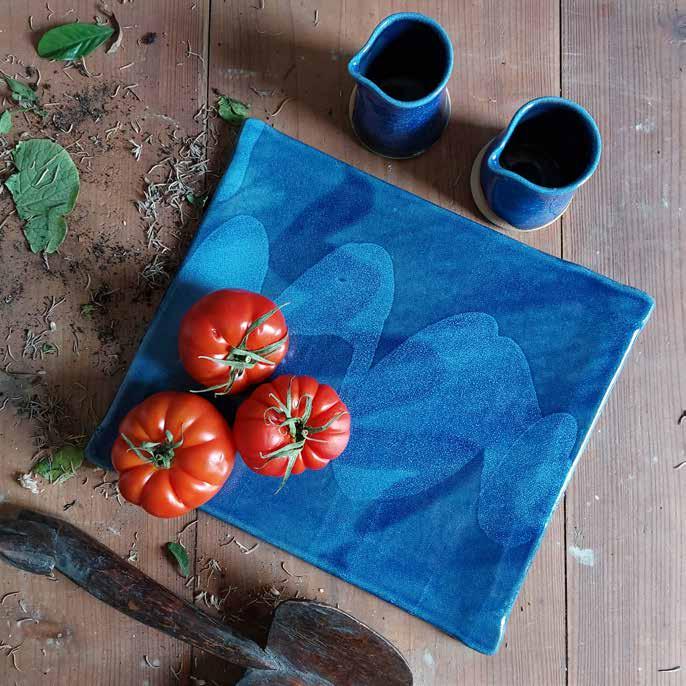
40
Do you feel the wheel throwing profession is in danger of extinction or an art which is gradually gaining popularity?
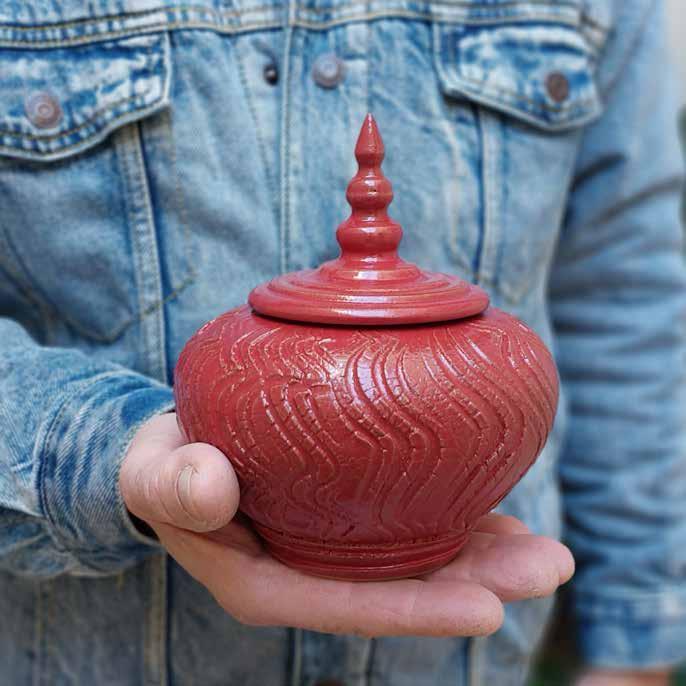
In 2010 Glasgow School of Art, where I was studying for my degree, closed its ceramics department, it was the last ceramics department offering degree level education in Scotland. At that stage I could see ceramists becoming a dying breed and wondered about the fate of the medium, but then in November 2015 The Great British Throw Down aired its first series on BBC. Although I wasn’t fond of the competition element of the programme it did trigger a great deal of interest in the general public who were already used
to the same format on the Great British Bake Off. Many more international news articles began to appear about people taking up pottery and in the ceramics circle we heard of an increased interest in classes. As a back lash to our current IT driven world I think people are also starting to look for interests that reconnect them with tradition and working with clay not only does that but is a very meditative, grounding pass time. In short I think there has been a revival but am not sure just how many opt for throwing which requires a different skill set to hand building.
41
What does texture mean to you?
I associate texture with stories. When I renovated my studio I had the multiple layers of paint and plaster removed from the walls and for weeks after completion I would find myself starring at them. Like most Maltese limestone walls they have amazing tool marks, some made by hand tools some from machines but each indicate how the stones were shaped and placed to create the rooms. These are by-products of building, what I do is intentional to add my story to a piece of work. I have used a snake skin, picked up whilst walking through Buskett Forest, Maltese bread which is so basic in our eating habits, feathers, ashes, I know where each comes from and it allows me to work in my own voice.
I read you mix your own glazes. Why is it so important to have a personal imprint on the raw material?
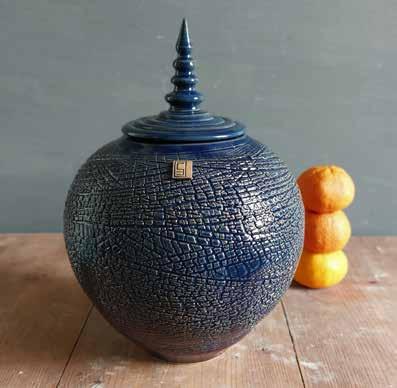
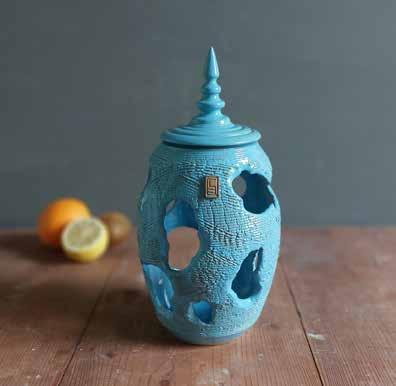
I like to have control over my work from the design stages, through making, drying and firing and this includes making my own glazes and experimenting with colours. It makes life more difficult than buying ready made off the shelf and probably, physically mixing all the raw materials is my least favourite task, but seeing the results is very rewarding. These colours also become part of my signature and identifies work as mine.
What window does social media offer you to showcase your talent?
I have a love/hate relationship with social media. It’s a wonderful way of getting your work to viewers and I like to use it in a light hearted way which seems to bring like minded folk in my direction. My photographic skills have improved a lot because of it and I have become connected with a fabulous variety of very talented people including other artists and excellent chefs. My website has become almost redundant because of social media
42
as it is so easy to update, immediately reach people and in return receive reactions. Because of social media I have sold to America, Canada, Israel, Georgia and a good few places in Europe. The down side is that you are constantly reachable and work never seems to shut down, small price to pay though I guess.
How does your work marry well with food?
That’s an interesting question and I guess I just have the right aesthetics. I don’t like wildly glazed splashed surfaces and that also doesn’t compliment food, it interferes with presentation. I use textures a lot as we discussed but I like them to be subtle background features to be discovered so again they don’t interfere with plating. With designing and creating work for restaurants there is a long mating period where I get to know chefs and restaurant owners well so that I get a feel for what they want and what food will be served. I still find it extremely exciting going through this phase and being open to new ideas with the passionate characters I meet.

43
Many catering outlets have your imprint. What added value does a bespoke product offer to a catering outlet?
I work with extremely talented chefs and I can feel the enthusiasm they have for food is the same as I have for clay. When they are creating a dish they are looking at every aspect of the eating experience from ingredients, taste, texture to the dinnerware they are going to use for presentation. My hand made work, as with all hand made ceramics, has a different appearance, feel, weight, and even sound to mass produced functional ware. If a client is eating off studio ceramics they know that the chef has gone
that extra mile to present the food to them. They are also guaranteed a personalised design adding to the unique quality of the meal and ensuring that it is in harmony with the interior design and personality of the establishment. My regular clients also like to visit restaurants that I make for, people with a genuine interest in hand made objects also seem to enjoy quality dining.

44
What’s next on your agenda?
This year I have been working with clay 30 years. If the three decades have taught me anything it’s that plans are just a way of looking forward and not a fixed structure to work by. My small design business operates in three main ways; designing and producing for restaurants, designing and producing for private clients and making off the shelf items for immediate purchase. This is a perfect balance for me and I hope to retain that way of working going forward as it stretches my abilities and creativity in multiple directions. I have no big plans for the future, I’ve never wanted to expand, employ people or start mass producing my work, I always want the final items to be made by my hands and
have full control over their completion. I know this probably isn’t a very current way of thinking as the trend is for ambition and growth, but I feel that that attitude can sap the character and energy out of a business and products such as mine. There is a limit both physically and due to time constraints with how many items I can create but I think this is a good thing and keeps me focused on producing quality work. As long as I can continue to be in contact with clay and produce new, relevant surfaces and forms, I’m very content.
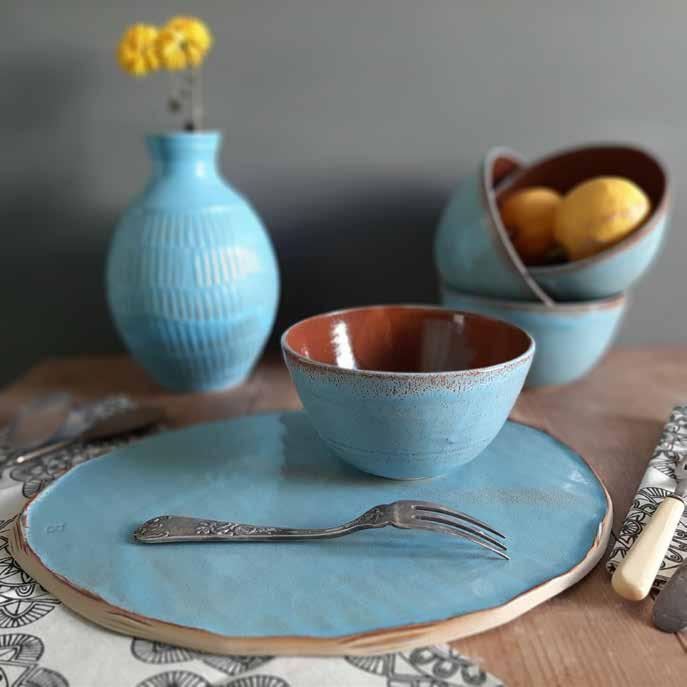
45
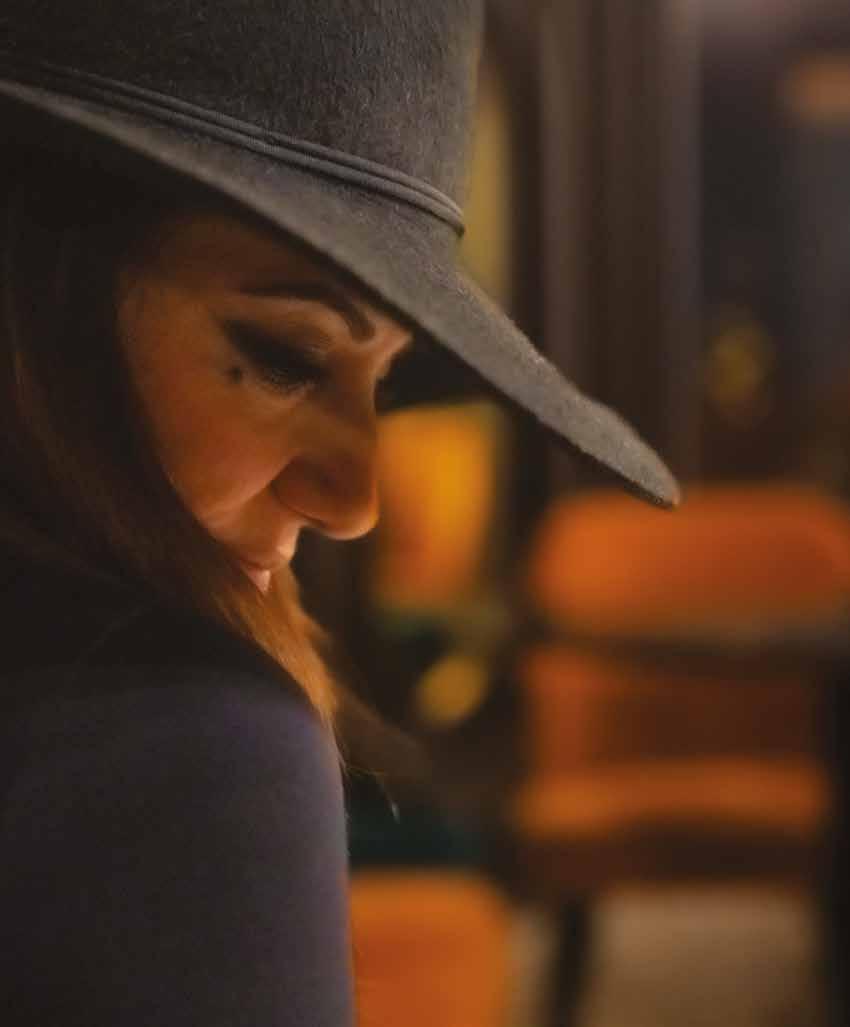
46
Photography: Joseph Calleja / Robert Caruana
theothersideof
Where to start?
She is bold, smart, sophisticated, she approaches her work with careful planning and unwavering determination. She is a compassionate individual, who exudes warmth through her expressions. She is however, just as straightforward and direct in her communication style. She is strategic, meticulous, focussed and goal driven. She is kind, gentle, warm, caring and openly emotional, with a smile and a laugh that lights up a room. Yet, Claire is also blunt, frank and straight to the point. Above all, she is successful. Successful in the way she manages to juggle her busy agenda. Successful in the way she manages the family business. Successful in the way she thinks and above all, successful in the way she keeps on striving to be a better person both from a professional and from a personal point of view. Probably this is her key asset which earned a reputation as one of the leading entrepreneurs on the island. Claire shared with Atelier her journey in the entrepreneurial world and what her life looks like beyond work.
Interview with Claire Zammit Xuereb
47
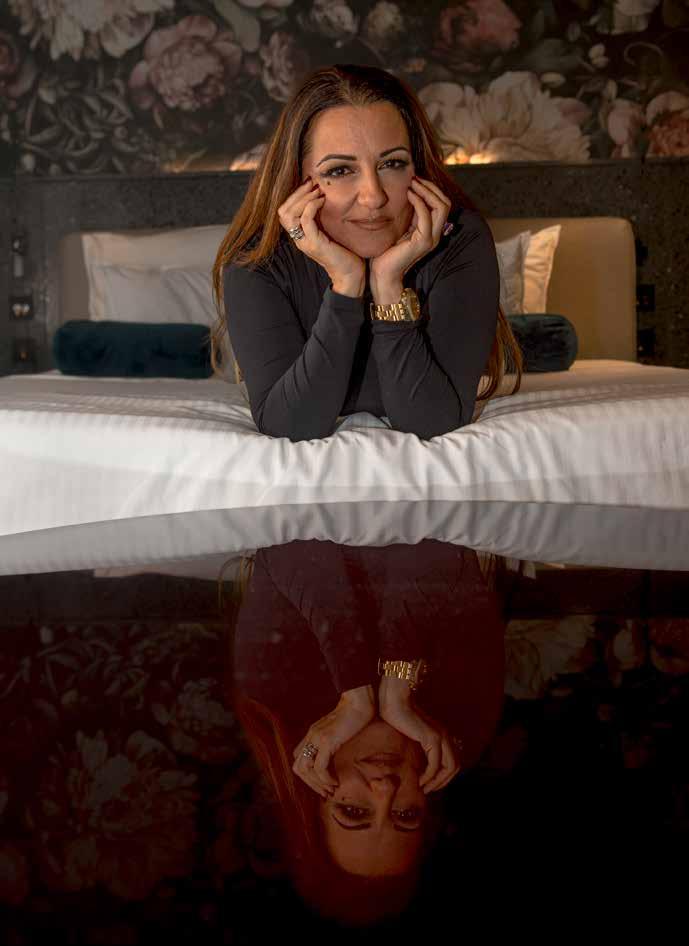
48
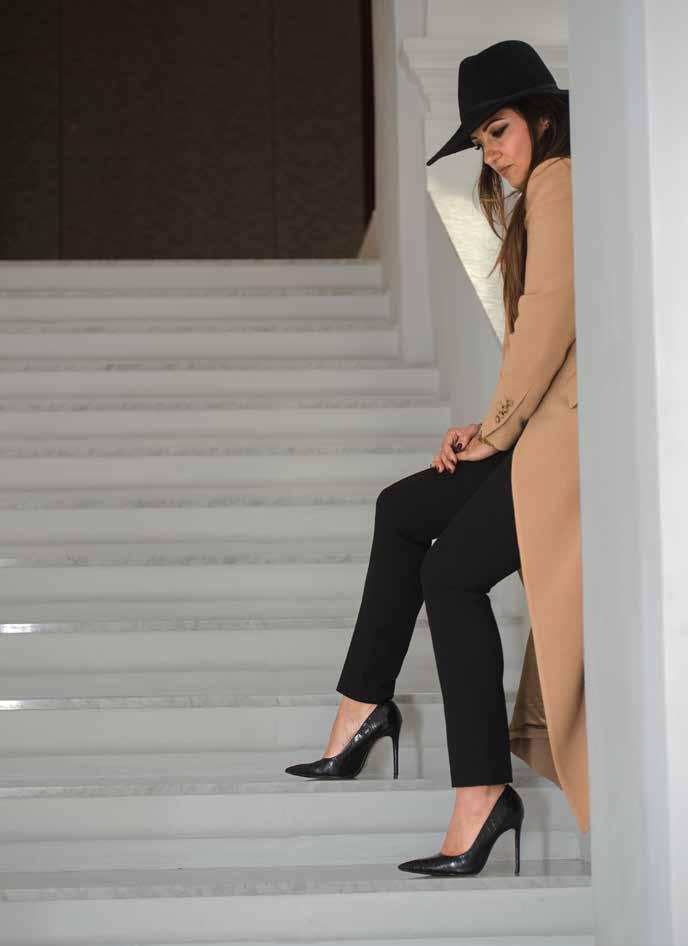
the other side of 49
I strongly believe that strength lies within the very depths of ourselves. Who we really are. Anything that is superficial is weak as well as short term. To me, being strong is being true to yourself in all circumstances and going for what you believe in, no matter the cost and obstacles. It also means being able to recognize which battles to afford losing and those which are a must to win.
I appreciate your compliment greatly because the difficulties and obstacles that I have faced throughout my life, have played a fundamental role in shaping me into the person I am today. The will to overcome the obstacles and stick to your believes whilst remaining grounded and relevant/helpful to those around you.
As I grew up, matured and gained life experience, I developed a thicker skin. It thickened because of the lessons I learnt and challenges I managed to overcome, but when digging deeper I am aware that it thickened also to protect a very sensitive heart and self. As I continue to grow and evolve on various levels, my inner self becomes more sensitive and attuned to those I choose to keep close. I suppose it’s a natural progression.
What does “success” mean to you?
In simple terms success to me is doing what you really want to do. Whether you achieve an immediate successful outcome doesn’t really matter, as perseverance will always get you there. It is the fact that you tried that counts the most. However small or big that objective is. It is all relative and different to different people. That first step, will give you the confidence you need to make it to the next level. The level you want to achieve all depends on you. As you climb higher, your confidence naturally increases. However, it’s crucial to remain grounded by reflecting on your journey, appreciating your origins, and acknowledging the sacrifices and hard work that led you to where you are today.
One time this woman asked me ‘so how do you go about acquiring something that you dream of’. To me it was so simple. ‘I go grab it’. Nobody can do that for you. Once accomplished, then you can acquire all the help you need but the first big step has to ALWAYS come from you.
You are often defined as a “strong woman”. What lies behind that outer crust?
50
the other side of

51
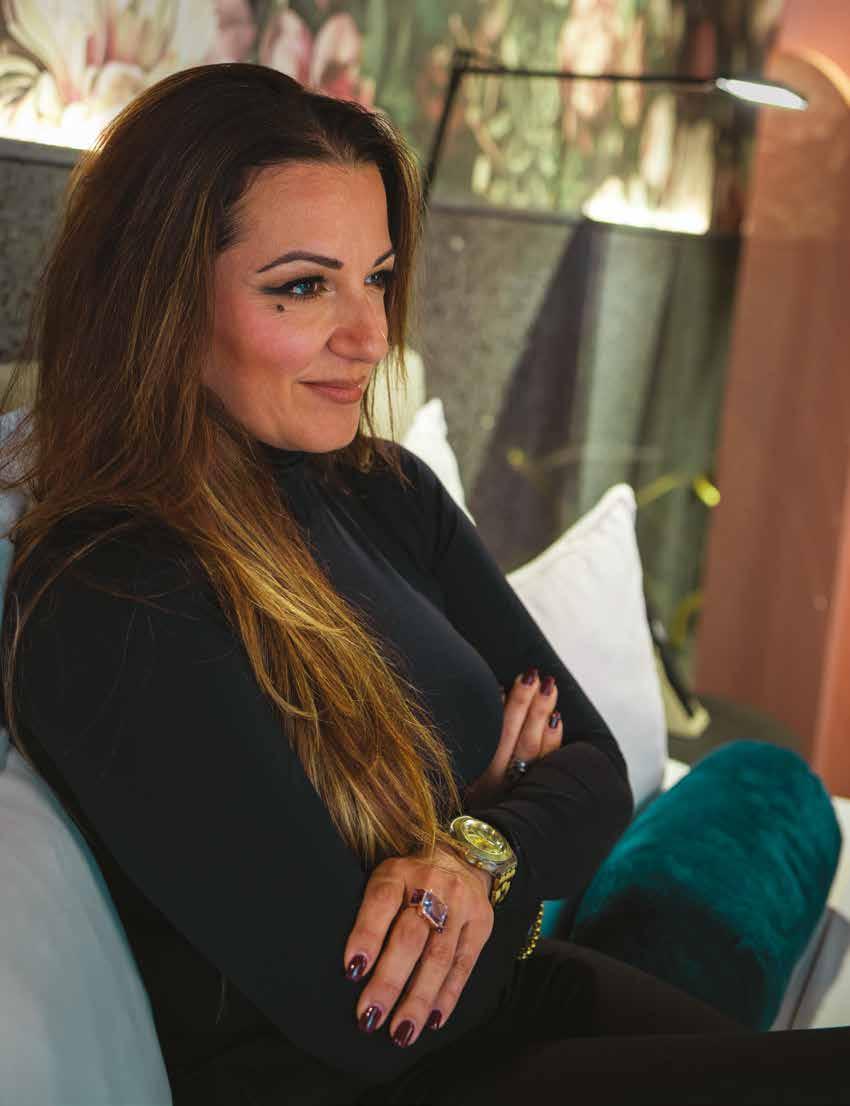
52
Tell us about your hoarding habits.
I am a very sentimental person. Since I was a child, I have always been fond of small things rather than big things. They often hold more sentimental value. I would keep a small paper that was given to me randomly with just some writing on it. I would store that paper in one of my various boxes where I keep all my precious sentimental treasures. I have a huge thirst for life and I guess this allows me to capture my moments by keeping things that can take me there directly, whenever I need them to.. It is also the same reason why I love taking photos.
Do you feel we still live in a patriarchal society?
I believe, or rather, want to believe, that we live in a world where factors such as gender, age, color, ethnicity, or sexuality are secondary to more important things. Unfortunately, I still sense some sexist ways and stigmas at high managerial levels and in some key roles but I blame it to sheer ignorance and lack of exposure to working with a mixed workforce. Life has taught me to not only focus on the problem at hand, but also to explore and discover the underlying problem that exists beneath the surface.
How has society changed following the COVID-19 pandemic?
I would say that Covid has shaken the very grounds that society sat on for many years. Society’s behaviour and reactions changed completely. We are certainly far more digital, less communicative, more cowardly, less patient and less respectful. It has diminished human interaction by far, which is a real pity. We have also seen major changes in consumer behaviour. Travelers for example. The way in which travel is booked and enjoyed has changed tremendously. The mediums used are different, interests and expectations changed, lead times shortened, and demographics have changed too. Our job in business is to adjust to these everchanging trends.
the other side of 53
Malta has always done very well when giving specialized jobs to the private sector. It is a win win for everyone and a very smart way to achieve growth. The private sector has the ideas and the efficiency one needs to make a project viable.
Investing in our education, to me is the most crucial aspect for any economy and society to grow. You can invest millions in a project but if you have an ignorant population, that project will go to ruins by time. On the contrary, by prioritizing investment in your people, any investment made in that country will yield greater returns as it is established on fertile ground. It will be appreciated, nurtured and developed further. The brain is by far the biggest asset we will ever own.
You are a strong advocate for experiential travel. How can such a concept be the way forward for the island’s tourism sector?
Malta’s size is what it is. No matter how much we wish or think it’s bigger, it has its limitations. In view of this, the only way to grow further now is not by bringing in more numbers as the infrastructure cannot take it. We are experiencing this already. The more we grow the supply, the more travellers we need to fill those beds and the more workers we need to serve them. Before we increase the supply of products and services in Malta, we must make sure that we are adding value to product Malta. Otherwise, we will only be engaged in price competition, which is not a viable business model and will ultimately have a negative impact on Malta’s economy. The next thing we must do is make sure we elevate the quality not the quantity, by driving various experiential concepts both in accommodation as well as food and beverage. This is the key factor that will set Malta apart from others, and it will also allow all stakeholders to establish their own unique market niche that complements one another in the market.
In what way do you feel that Malta’s growth depends on greater involvement of the private sector, as well as the need to strengthen our education?
54
the other side of
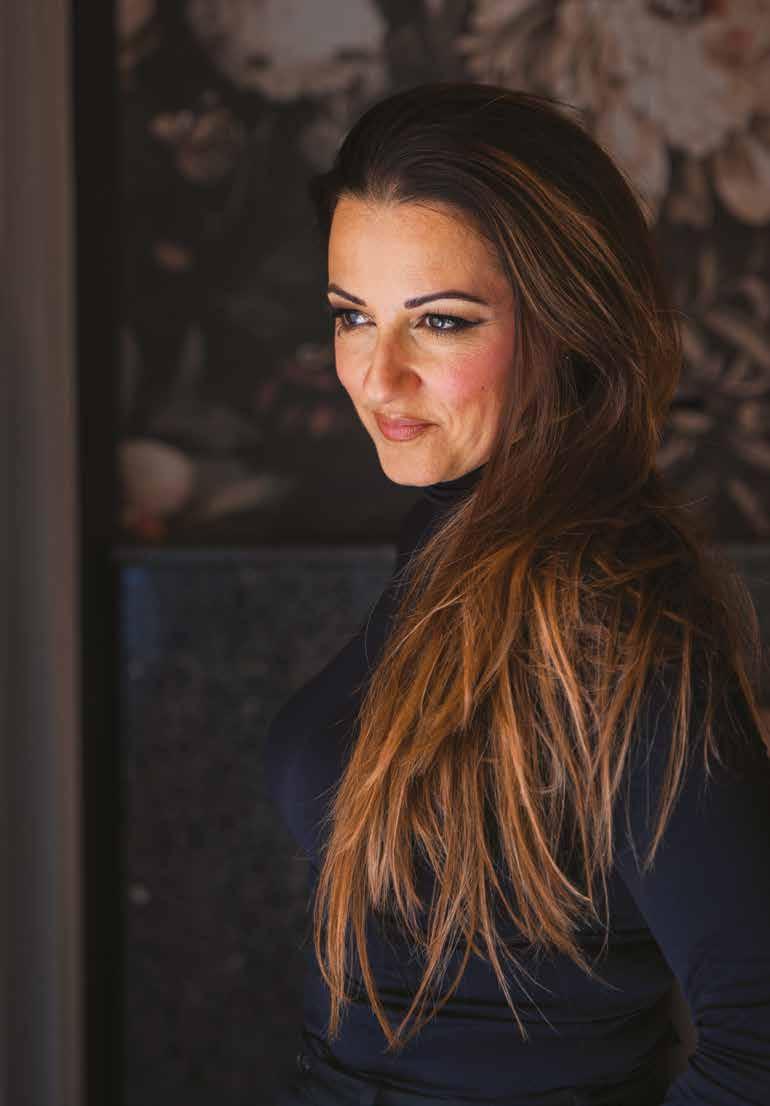
55
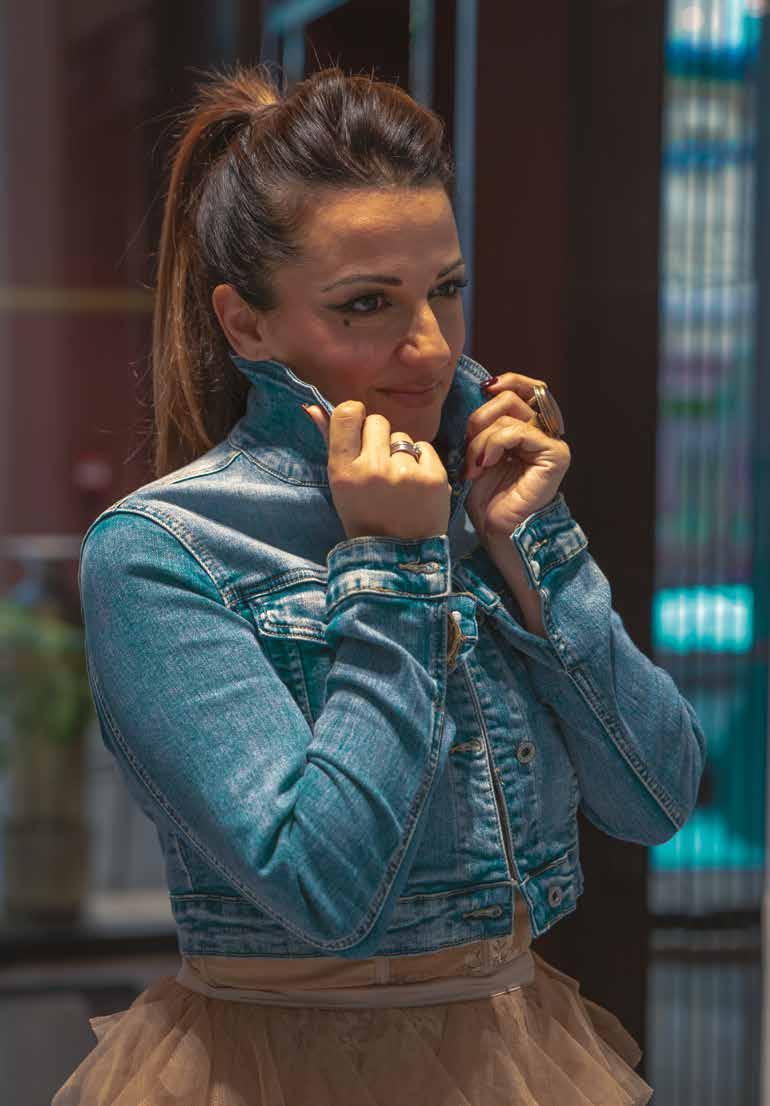
56

the other side of 57
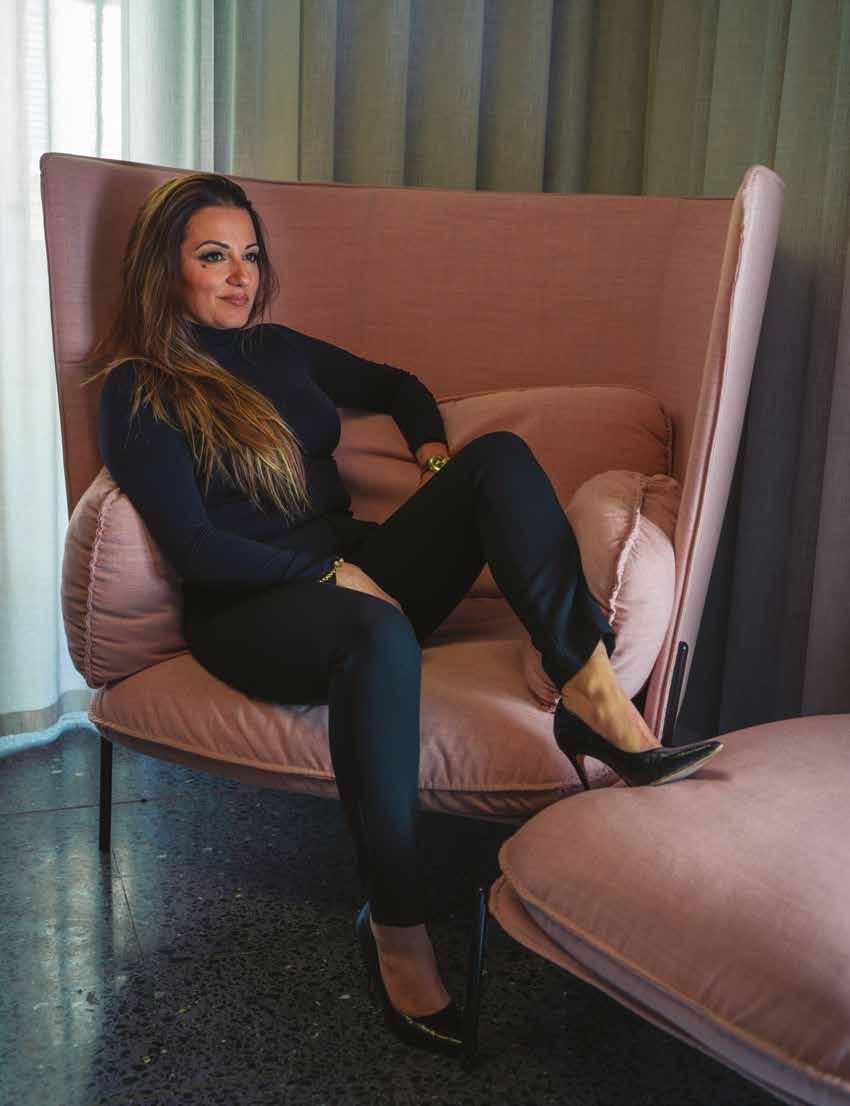
58
What makes Oprah Winfrey a person you look up to?
Oprah has been through a lot in her life and has recognized mental power through her successes. I admire her confidence, but also appreciate her grounded nature and her determination to help others.
How has the local care sector evolved over the past years?
The Care sector on our island has made huge advances. It has now been a year since I took over AX Care, which I have become very fond of. We are currently among the very few institutions that provide private, high-quality care services in Malta. We are very proud of our professional staff and management who truly care and go out of their way to make our residents comfortable and happy. Hilltop on the other hand has given the Care industry in Malta a totally new dimension. It is a state-of-the-art facility with all the care one needs at the tip of one’s finger, surrounded in luxury. The concept is a huge success.
the other side of 59
What’s next for you?
Having centralized several functions to gain higher efficiencies during Covid, it is now time to expand and focus on management contracts. We are the largest local hotel brand operating on our island, with 40 years’ experience in the field, hosting travellers from all segments of the market. We have acted as a training ground for a significant portion of Malta’s workforce in the hospitality sector and remain committed to enhancing our reputation as an employer of choice. It is time to manifest our talent, resources, market intelligence and muscle in the market, by sharing it with selected partners in order to grow together. I am looking for partners who share our vision of creating real value in the market by delivering high-quality projects with distinctive concepts, rather than simply replicating existing ones.
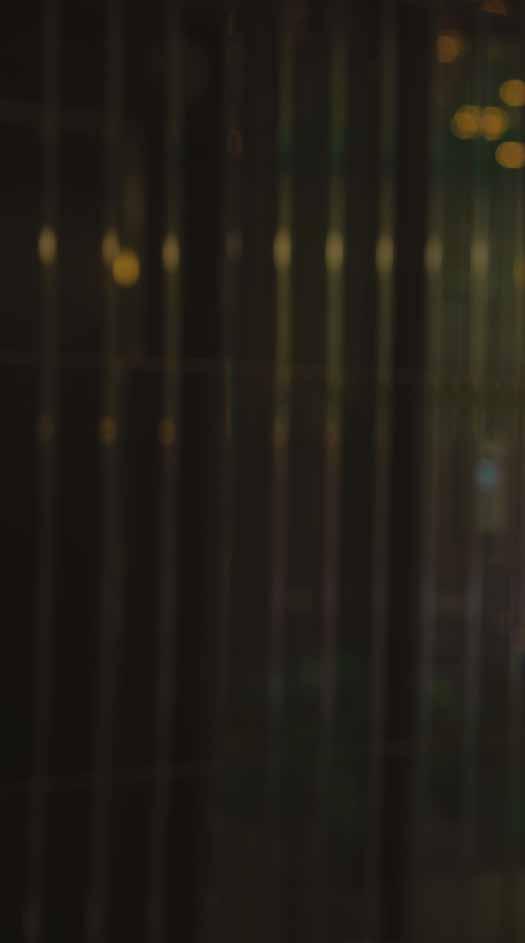
60
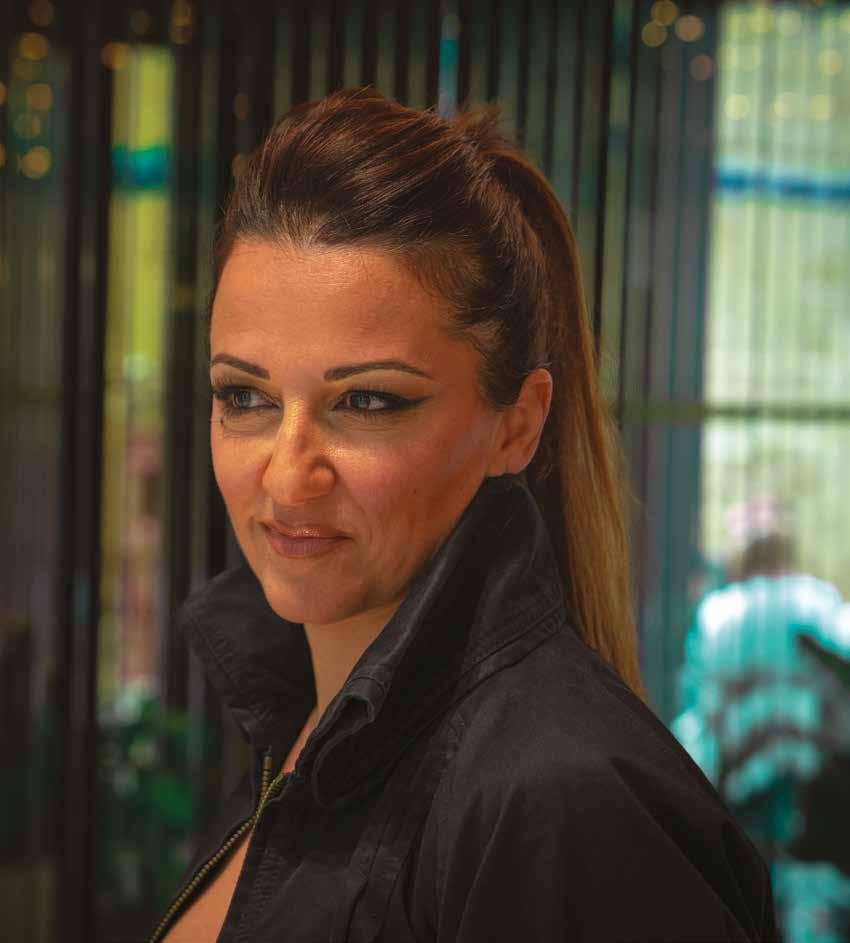
61
the other side of
Photographer: Robert Caruana
Dress: Charles & Ron
Coordination: Daniela Micallef

Shoot taken at Marie Boutique Patisserie, Rabat


Beautiful, Artistic, Functional, Meaningful ….

64
(X,Y,Z) Architecture & Design is an architecture and design studio which focuses on creating spaces that are not only beautiful, artistic, functional but most of all, meaningful. Meaningful in the way they are designed, meaningful in the way they are built, meaningful in the way the final result makes a difference. Janice Fiorentino, one of the partners of (X,Y,Z) Architecture & Design shared with Atelier her views, her vision and her thoughts on the world of design and architecture.
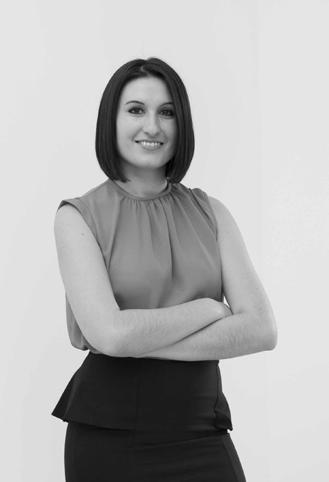
How would you define architecture?
Architectural design is the creation of spaces and spatial volumes for people to live, work and interact in. Architecture effects directly our lifestyle, our moods and well being, and hence efforts spent on architectural design are an investment towards our quality of life.
65
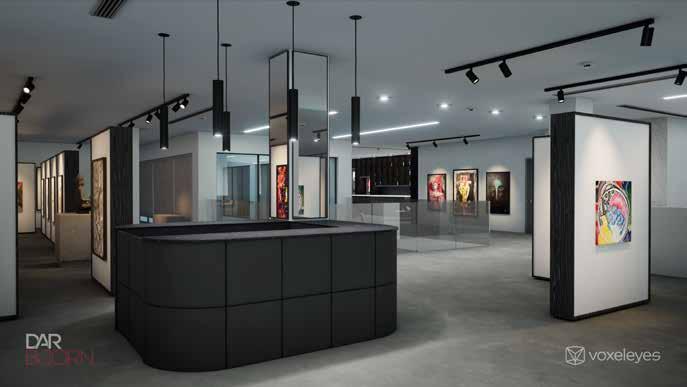

66
What are your thoughts on the importance of renders in architecture today?
Renders are not as such important in architecture. As an architect what is important is to be able to transmit my vision through any medium that is comprehensible - can be sketches, pasteups, scale-models or any other medium. Some clients do find it easier to understand by choosing the photorealistic rendering methodology and that is totally understandable.
What do you think is the most effective way of presenting a project?
I think it really depends on the creator and his preferred medium of communication. It also depends on the audience and the type and complexity of the project. As explained above, i do not think there is a most effective way but it depends on a number of factors. Technology is also continuously redimensioning the way how ideas are communicated.
How could you define your architectural approach?
For the residential projects, it is most definitely inspired by the client, his lifestyle and personality. The clients are our best inspiration and the more we get the know them, be more personal and tailor made the end result will be. For the corporate projects, it is mostly inspired by the company’s ethos, mission statement and future vision. Sometimes its the little details we pick on that contribute to innovative architecture and design. Other factors which inspire us include the site context and inevitably worldwide architectural trends.
Do you think there is an increasingly ‘globalized approach’ to architecture?
In some aspects yes, globalization has globalized our entire lifestyle, work practices, and our daily routine. This phenomenon is hundreds of years old now, and has accelerated during the last decades. Construction technology, commercialisation of materials and increased transportation facilities have also contributed to this. Clients are also highly exposed to international design trends through various platforms and means, which also contributes greatly to their vision of desired homes and spaces.
67
Beautiful, Artistic, Functional, Meaningful ….
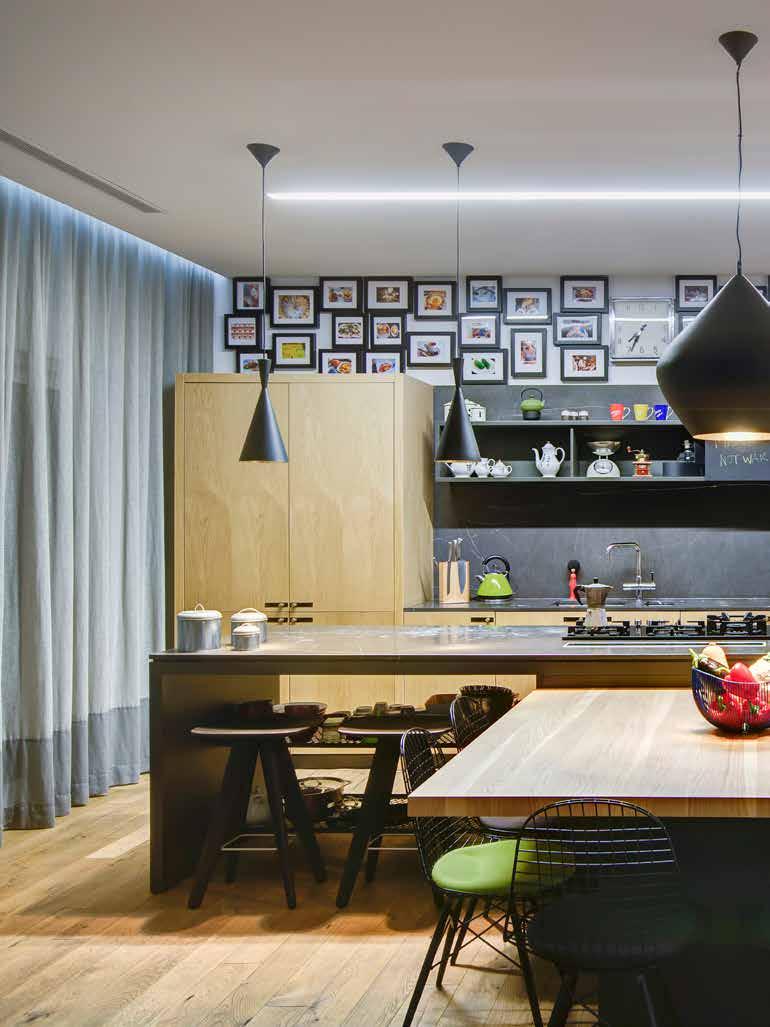
68
Beautiful, Artistic, Functional, Meaningful ….
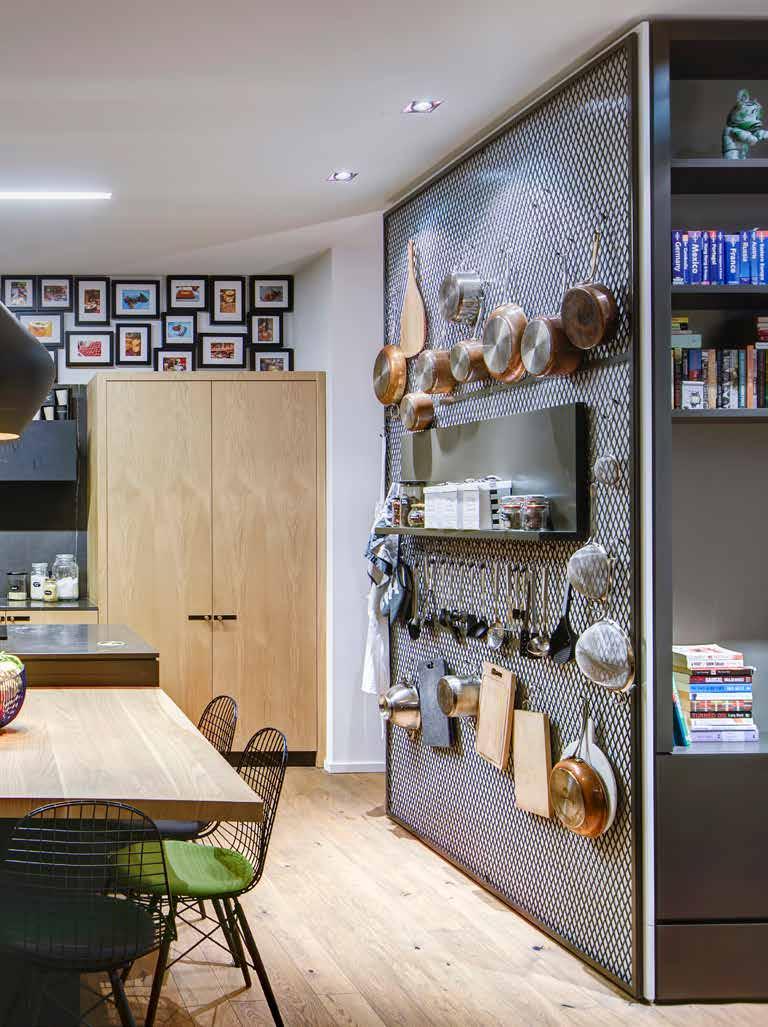
69

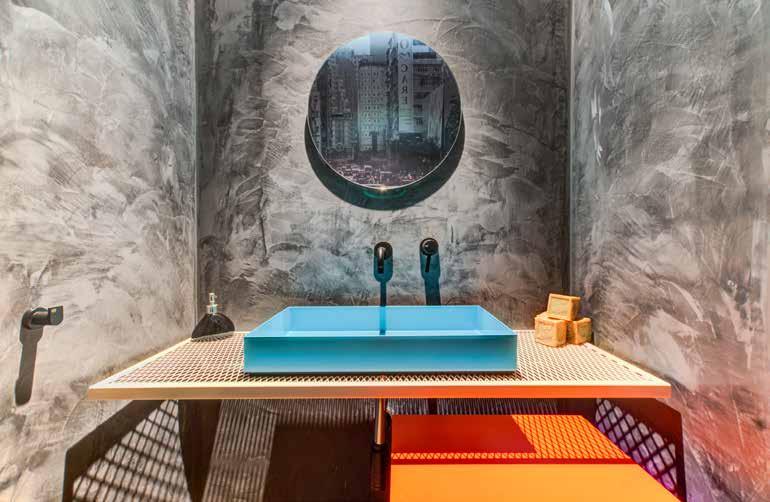
70
How can an architect find the right balance between aesthetics, environmental sustainability and commercial sustainability?
I think one has to keep all in mind during the initial design process. It starts getting difficult once one of them becomes an afterthought – that is not quite possible. Holistic design is surely the key. I think that with the advancement and availability of different materials, this is easier than ever to achieve if considered thoroughly at the inception of a project.
How has architecture evolved over the past years in Malta?
Where would I start from. Architecture in Malta has always been inspired somewhat from our rulers. Our traditional farmhouse juxtaposed masses in local stone are probably the purest forms of Maltese architecture, originally driven from our climatic conditions. I believe that in the past, designing according to our climate gave us alot of interesting design elements which we still celebrate today like loggias, shading devices, the courtyards, cross ventilating openings etc. The Arabs gave us additional Arabic design elements, as did the Knights of St John, the British etc. Every period designed architecture for its era, but keeping in mind and adapting to the local warm climate. Nowadays and since the mid 1900s, the increased reliability of technology to heat and cool our spaces, and availability of materials drived our homes to be designed more similar to our global counterpartsas happened in each country due to globalization as mentioned above. In the 1930s and 1940s, the International style had already started to spread all over the world creating a more unified approach to architecture.
What advice would you give to young architects?
My advice would be to ask as many questions as you can. Question and challenge everything and try to find alternative answers to simple questions. Most answers in this sector would be “because it has always been done this way”. The more we challenge this, the more innovative and creative we can be. We are possibly the only creative source in our megalomaniac construction sector and let us continue to be so. And the second advice would be to continually experience, expose yourself and keep up to date as to what is happening in this sector globally; be it materials, technology, concepts and ideas.
71
Beautiful, Artistic, Functional, Meaningful ….

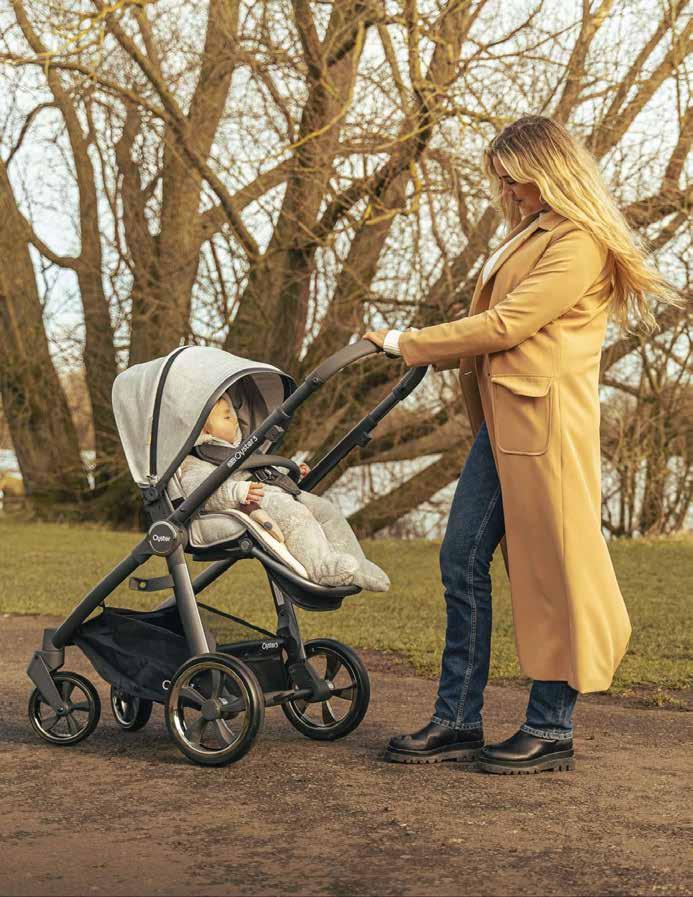
40 Triq Marina, Pieta, Malta Tel: 21570080 - 21570081 - 99570080 info@littlestarsmalta.com www.littlestarsmalta.com
Johann Grech Malta Film Commissioner
Throughout different eras, our economic growth focused on various niches, from manufacturing, maritime, aviation, financial services, technology, pharmaceutical to gaming, among others. Every time economic growth is debated in our country, the discussion delves into the new niches that Malta is supposed to pivot towards.
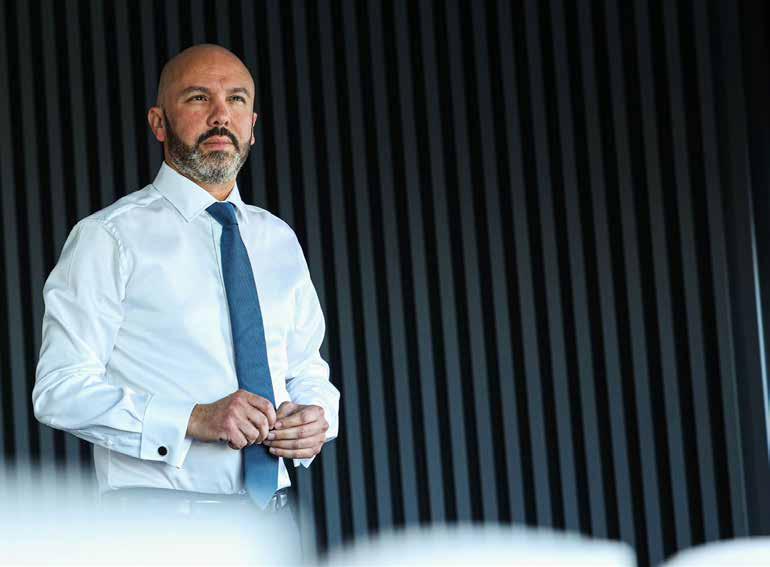
Obviously, these sectors have always been built on solid foundations, reflecting the focus of the particular period of time. Political direction was not the driving force alone. But education, training and professionalism of our people were key elements for our country to be competitive and attract new inward business. In some sectors, even leading in Europe.
Industries are built on foundations reflecting the capabilities of the people and the current landscape of the country; its progress and its drive to rise to the challenge. We have to hustle and compete with countries who have more resources than us.
What dreams are made of…
The size of our country never stopped us from dreaming big.
A small country in the Mediterranean, but a great nation where through a collective ambition and our ability of working together as a country, we achieve our potential. The power of togetherness reaching our dreams.
As a nation, we always worked hard to achieve more and progress. Our grandparents always wanted their grandchildren to have a better future. And our parents followed our ancestors’ footsteps to make things better for us. Now, it’s time for us to create something stronger for the next generations to come; for our young people who are tomorrow’s nation.
Malta has to remain agile and compete hard to keep achieving success. Today, there is a huge demand for people to work in the film industry. Whereas other economic sectors struggle to find the needed demand for people to work in their respective industry, the local film sector is actively recruiting people from different walks of life. Yes, people are responding to our upskilling and training programmes. Those working in the film industry want to remain working in it. Their commitment is clear. They want careers in the film industry.
74
This is my case of why the film industry in Malta should not accept the status quo, but we should be building on an already solid foundation and reach higher. And wherever change is needed, we need to build back better.
We have the perfect selling point to attract more people and meet their aspirations: film itself. This is a sector full of creativity, innovation, and storytelling. The power of imagination. This is what dreams are made of.

When I was appointed Malta’s Film Commissioner, five years ago, the industry was a seasonal one, with its potential underestimated. An industry where job opportunities existed only for the selected few. A neglected industry, crying for investment. We were losing talent to other industries. It was an industry where people believed that jobs were not secure; where careers were just a pipe dream.
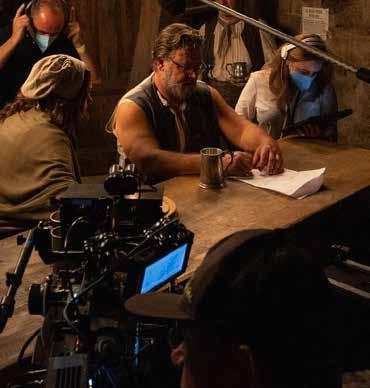
75
In the past five years, we have worked hard to divert the industry from a seasonal one, to one with back-to-back productions; with an increasing workforce, working from one production to the other. Well, this isn’t enough. We want to reach even higher. Our dreams have goals. Because dreams without goals are just dreams. We want to create a sustainable film industry based on careers – for the many not the few.
Malta has always enjoyed a strong reputation. And today, Malta’s reputation globally is even stronger. Malta’s story in filmmaking has been a success. But we cannot limit ourselves.
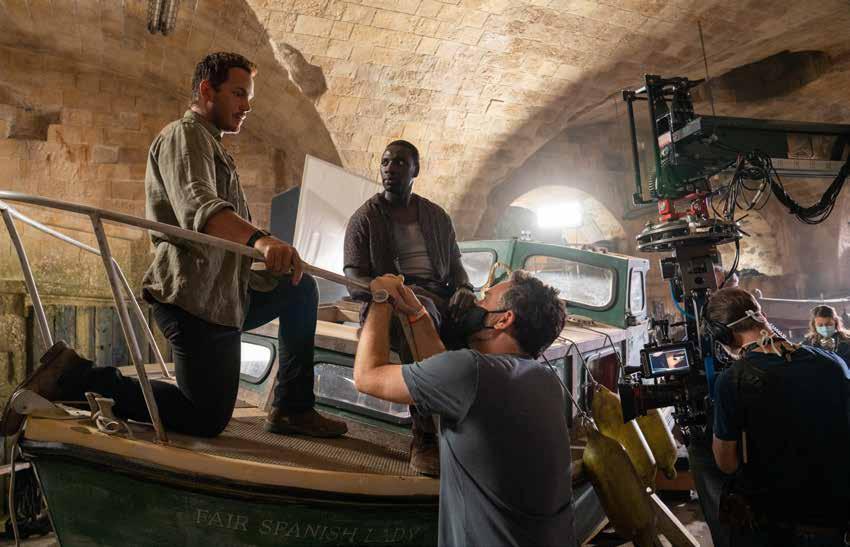
The opportunities for our islands are enormous and clearly the demand for people to work in this industry exists. And as Film Commissioner, I am often faced with a very frustrating reality, which I don’t often talk about.
We want to strengthen the synergies between government, the private sector and the industry itself – because only by working together can our country achieve more. We want more people to join the film industry – because there are jobs for everyone. We want those who have been working
in the film industry to have the chance to walk up further the ladder of opportunity within the different departments – because our industry is very fluid in opportunities.
We will walk the talk, as always have did. This Government is investing heavily in the infrastructure of the Malta Film Studios, with the building of world class soundstages and facilities. Malta has lost a lot of productions, and jobs were lost as well, because for 40 long years no investment in the film studios was undertaken. There was also no solid investment in the skills –with limited supply of crew and infrastructure. It’s really heartbreaking that the film industry was taken for granted for a very long time. Today, the Government is creating the appetite for the private sector to invest more in services and potentially in the building of more soundstages.
We have strengthened the cash rebate that Malta gives to foreign and local productions. This means securing people’s jobs within the film industry and other service industries. Let’s be very clear – we are competing heavily within a competitive market, especially with other Mediterranean countries.
76
What dreams are made of…
There are many countries, even other European ones, who offer rebates and tax credits of all kinds to lure investment, and while our incentive structures are competitive, we are by no means alone in offering them. But I am proud to say that we have a government which is pushing forward the film industry, as otherwise this success would not have been achieved. In 2022, we had 24 productions which generated over €85 million into our economy. It was a record year. It was the best year in a period of 10 years, in terms of employment. Over 900 Maltese crew and 1,000 foreign crew worked on productions in Malta during 2022.
This shows that we we are on the right track, but there’s still a lot of work to do. We need to invest more, especially in the fundamental pillar which hold the industry: education and training. Only through upskilling will we have better opportunities for the Maltese, which in turn will lead to better wages.
The Film Commission has started a series of training sessions for those looking to join our industry. Hundreds of people are responding to our call. But this is just the beginning. For the first time, since its establishment, the Malta Film Commission is embarking on an ambitious educational programme – all year round – to strengthen the talent and skills within our industry. By working with local and foreign educational institutions and in partnership with the industry itself, we want to give a sure start to our children and young people to achieve their ambitions.
Economic growth and skills are interlinked, and we have to invest more in this area if we want to progress. Education, training and the continued professional development will strengthen our crew base for productions to be more able to use local crew and import less foreign crew.
Whenever a large production comes to Malta, Maltese and Gozitan professionals should compete for the different positions and roles, and not be excluded due to skill shortages. It’s a healthy process to compete. And our job is to equip people with the necessary skill-sets to be able to do so.
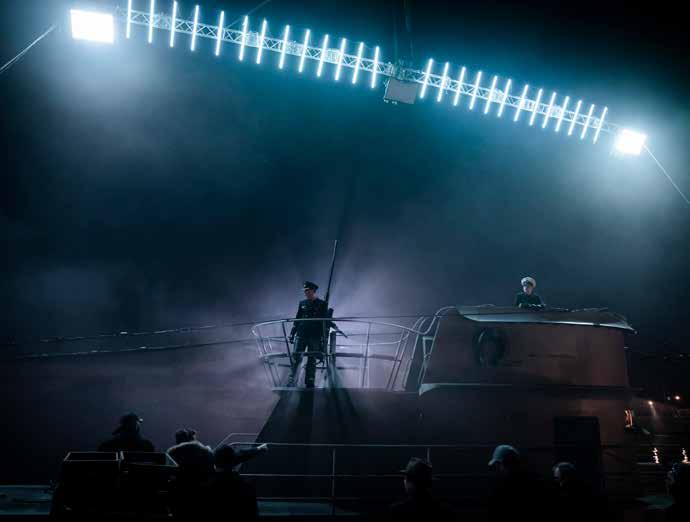
77
What dreams are made of…
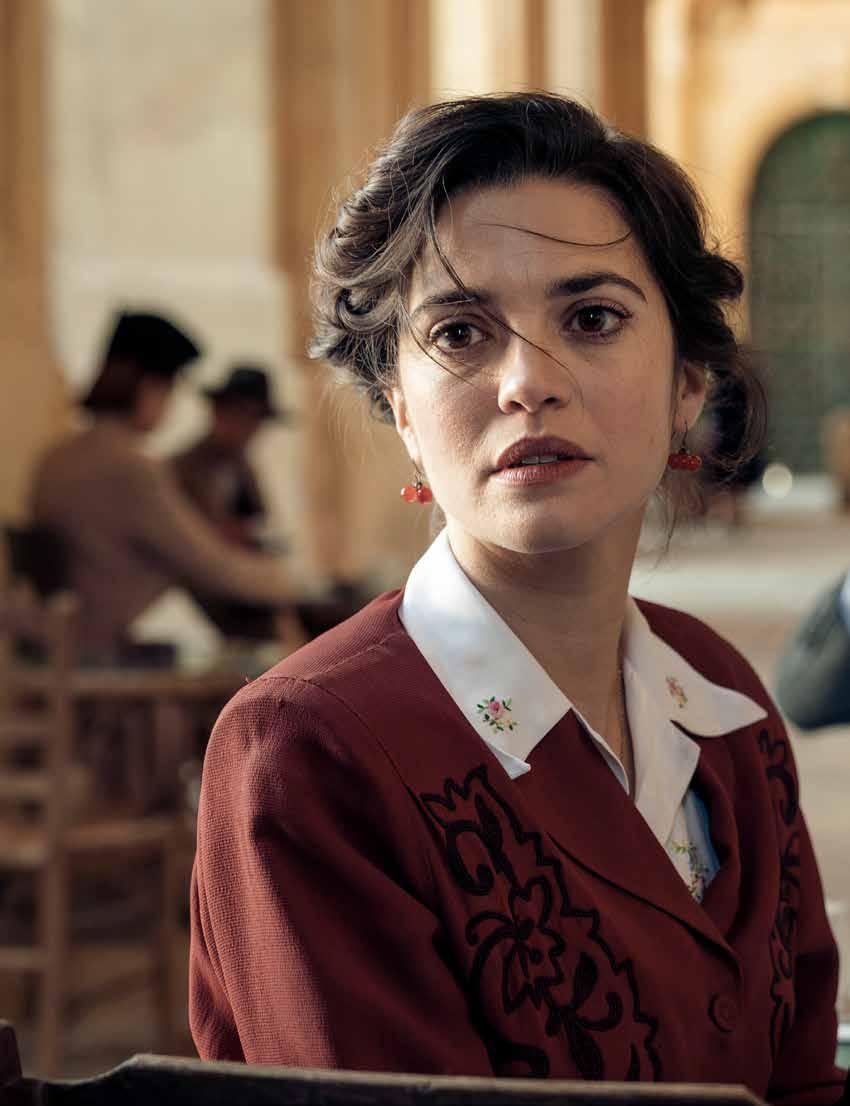
78
We will be focusing on providing training opportunities that create a supply of highly skilled crew. This will make Malta a more attractive filming destination, with better wages for our crew, and at the same time increasing the demand for their skills.
The continued growth of the film industry in Malta means that people in the industry will have more opportunities to work on large scale productions and enhance their experience.

Meaningful growth in this global economic climate is quite rare, and this is an opportunity for Malta – as a country, but also as an industry and its stakeholders. We cannot afford to lose out on this. Expanding our brand offerings is crucial to achieving this aim as the demand for our country is a strong one.
There is a strong economic argument to be made here – while the film industry cannot be classified as a new niche, currently there is an enormous growth which, together with Minister Clayton Bartolo and the Government, the Film Commission is working to nurture.
Our role as Malta Film Commission – and mine personally – is to reach to our vision of creating a world-class film industry, thus realizing people’s dreams within our film industry. I will not shy away from boldly doing so, as it is my job and my duty. I am against the status quo; I will remain pro-change. Because, change is a process not an ending, and if done right, change shall lead to the progress we aspire to achive.
We will not stop short from opening the doors of opportunity for all.
I shall keep on driving the energy to deliver more because I want our country to gain more foreign direct investment, which in turn leads to more opportunities for our people. We have walked a long and tough journey to achieve today’s brand positioning and the prospects it offers.
Our duty is to get it done. We have the drive, the energy, to deliver the change we are promising. We will not stop dreaming to achieve more for all those who belong in the film industry. We will deliver our promise of creating a world class film industry in Malta.
We are determined to continue our fight to accomplish more growth in the film industry. We will keep thinking big and will not stop half-way. I am committed for further successes. When film in Malta does well, everyone wins.
79
Dusseldorf and Dubai, Two boats shows one vision.
The first few months of 2023 were busy months for Yachting Malta Ltd, fresh from the official launch of the national racing yacht Viva Malta and the Euromed International Dinghy Regatta in late December, Yachting Malta participated for the first time at the Dusseldorf boat show courtesy of the Malta Tourism Authority on the Visit Malta stand.
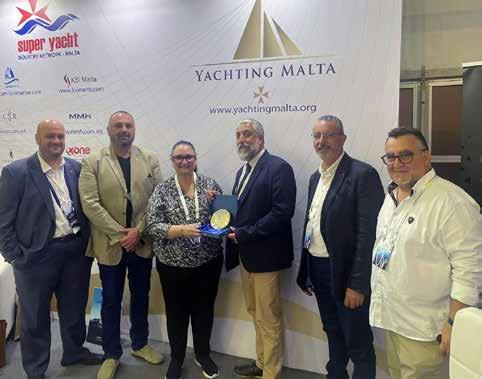
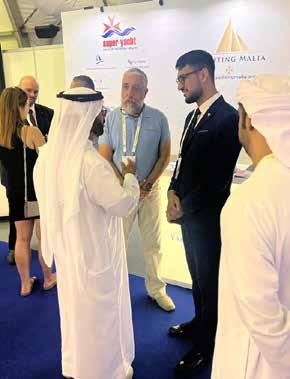
Yachting Malta was invited by VisitMalta to combine forces and together represent our island in what is possibly the largest indoor boat show in Europe. After not having a Boot Dusseldorf in 2021 and 2022 due to the Covid 19 pandemic, there was a huge anticipation for the show in 2023. Despite the fact that boat sales during the pandemic years did not dwindle, the boating public was yearning to see the newest offering, the technological advancements and meet in person again. With around 1600 exhibitors from 50 countries, it is of paramount importance for Malta to have a presence and showcase its offering to the European boating public. While previously VisitMalta only used to portray Malta as a diving destination during the show, this year for the first time our offering also included a glimpse into yachting in Malta where Yachting Malta’s delegation showcased Malta’s harbours, marinas and cruising grounds.
This show also offered an excellent opportunity to the new Yachting Malta chairman Jonathan Borg to meet with the Maltese yachting cluster at Dusseldorf. A very strong cluster of Maltese yachting industry professionals, that went up in full force for this landmark European boat show. The major boat and yacht producers are represented in Malta, which despite its size is a very important segment for producers.
The Malta stand at the Dusseldorf boat show was located in a very strategic place, especially for divers, but has received substantial foot traffic from yachtsmen seeking alternative and interesting cruising destinations. It is estimated that 237,000 visitors from 100 countries visited the show. A number of meetings with event organisers and producers of innovative maritime products were also organised. Yachting Malta plans to increase its presence at next year’s show and prepare a better offering to the visitors to the Malta stand.
Hot upon the return from Dusseldorf, it was full speed ahead with the preparations for the Dubai International Boat Show. Last year’s exploratory delegation indicated that the show was on the rise and a stand would bring significant benefit to the local yachting industry. An agreement with the Super Yacht Industry Network Malta saw the participation of this important network of industry players on the Yachting Malta stand. Offering a full spectrum of services that interest the boat owner/captain; from registration, to surveys, inspections, chandlery, refits, dry docking, to financial services and crew training. The firms that participated on the Yachting Malta stand were Camilleri Marine, Mediterranean Maritime Hub, KSI, CSR, Melita Marine, Insignia, Xone Academy and Esprit Yachting. The Yachting
80
Malta stand with its strategic location served as a fantastic base for the Maltese contingent; to organise meetings and offer their services to both walk-in visitors as well as pre planned encounters. The dedicated show mobile app also allowed the delegation to organise meetings with firms with potential for business. It is estimated that around 35,000 visitors visited the show during the five days, Over 175 yachts and boats were exhibited and the show was a hot topic with a number of high level visitors including the rulers of the Dubai and many high profile individuals.
Before the first day of the show, the Yachting Malta delegation attended the Middle East Yachting Conference, a very high-level yachting conference and the leading yachting conference of the middle east, which included a Maltese panellist amongst its premier line up. The programme was packed with wide ranging presentations that addressed a number of key issues in the yachting industry, and paid particular attention to the development of the marine leisure sector in the Middle East.
More than 150 delegates attended the conference. Regulations, infrastructure and the needs of yachting owners were some of the key themes addressed during the day. The Conference was officially opened by H.E. Saeed Mohammed Hareb, Secretary General of the Dubai Sports Council. He opened by stating that the Middle East Conference and the Dubai International Boat Show have both come of age now in its 29th edition.
The conference looked at how the Middle East mega projects are contributing towards making the region a superyacht destination. It was emphasised that with the Mediterranean being a summer destination, the UAE holds a potential of being a winter destination. This is a particularly interesting development for Malta being en-route between the two destinations, and offering to be an excellent half way stop with all amenities, including to make refit stops and crew change in Malta feasible, apart from contributing to promoting Malta as a stopover destination in its own right.
With several marina projects underway in Saudi Arabia, within Jeddah and the Red Sea being developed as new destinations. Luc Khaldoun, the director of new projects at Cruise Saudi, said, “It is important to develop the region as a destination, so it is not only about berths for yachts but also about good restaurants and hotels. Abdulla bin Habtoor, Chief Portfolio Officer of Shamal and Dubai Harbour Marina, emphasised that it was about “people identifying with the lifestyle”. Again this is very good advice for Malta as a Superyacht destination, where we are not necessarily being identified as a Superyacht destination and we need to learn and observe what other destinations are doing.
Other panels discussed the future sustainability of yachting through design, and working towards zero emissions. Sunreef Yachts explained that 50% of the company’s market currently involves eco projects and the work it is doing with solar panels. “We are building our first hydrogen-powered catamaran which is an 80ft yacht and will be launched in 2024,”said the Sunreef CEO.
Some speakers highlighted the need for the Asia-Pacific countries to work together to form a strong APAC network to support superyacht visits and promote the region as a whole. This is a strong indicator for the central med region, where we need to work with our neighbours to enhance our offering to promote the central med region together.
Other topics included ‘the role of crypto’, and ‘a new generation of yacht owners’. There was also an update on the value of LEOS (low earth orbit satellites) for yachts in upgrading wifi and email communications for all seafarers.
The Experiential Yachting Conference was also held during the days of the Boat Show where the Yachting Malta team were invited to attend by Dr Jessica Galea, a leading local maritime lawyer who was a panellist for this conference. This different conference addressed alternatives to yacht use in fields like Multifunctional Superyachts, Holistic Yachting, Preventive Health Care and Yachting, Experience Economy & Yachting. Investment opportunities in alternative use of superyachts were similarly discussed.
On Friday 3rd March, the Maltese cohort welcomed the Maltese ambassador to the United Arab Emirates H.E. Maria Camilleri Calleja, who visited the Maltese stand and met the Maltese participants and later visited a Superyacht at the show being exhibited by Maltese firm AC Marine. The visit also included a visit to the stand of Maltese firm Corinthia Group who are the operators of the Pearl Yacht Club in Qatar and an important player in the region.
The Yachting Malta participation attracted substantial media attention and featured in many Middle East journals from the region and others in neighbouring countries like Jordan, Lebanon and Oman.
The consensus amongst the Maltese contingent was that this is definitely a must participation for Malta and Yachting Malta will return in 2024 with a better involvement.

81
The Cutting Edge
Do you ever wonder how local celebrities seem to effortlessly strut in front of the cameras with the perfect hairstyles?
Behind those stars lies the magical hands of one of Malta’s best hair stylists - Dean Gera. Truly so, because rain or shine, Dean ensures there will be no bad hair days for any of his clients. Atelier caught up with him to discuss his his views, his thoughts and his creative mind.
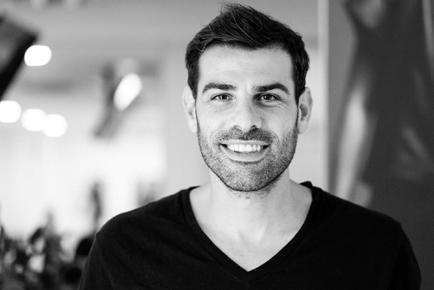
82
Interview with Dean Gera

83

84
How did it all start?
I come from a family of hairdressers, including my mother, my aunt, my uncle and my aunt’s husband. When I was a teenager, my mother asked me to help her out in her salon over a busy period, doing things like making teas and coffees and shampooing her clients. The rest, as they say, is history.
What inspires you as a hairstylist?
I love giving the confidence and feel-good factor to clients. It’s a privilege that I do not take lightly.
Who is your ultimate hair icon?
Trevor Sorbie. I was fortunate enough to work with him at his Covent Garden salon and he is an incredibly talented yet humble man who taught me so much.

85
Tabatha Cofey once noted; “Like a therapist, or the local barkeep, hairdressers are in a position of trust. We are transforming not just how a person looks but how they feel and, therefore, they want to tell us things.” To what extent do you agree?
I completely agree. Clients develop a rapport with their stylist and their appointment allows them a time and space in their day to focus on themselves, so it’s only natural that they share with us what is on their minds. It’s important, however, to recognise that as hairdressers we are not therapists, so we can listen but we cannot guide nor give professional direction like a therapist could. A lot of the time, however, all a person really wants is to be listened to.
Debunk the biggest hair myth you’ve heard.
‘Frequent trims make your hair grow faster,’ which isn’t exactly true. The benefit of regular trims is that the hair ends are kept healthy, with any ends that are starting to split being cut off. If you were to try to grow your hair without trimming it, the split ends would get worse and you’d either end up with long, unhealthy hair or end up needing to cut a great length to restore it back to health. It is precisely for this reason that regular trims are encouraged.

86

87

88
How do hairdressers find the right compromise between work and a private life?
When I was younger I worked hard and put in the hours to build the brand. It’s not to say that I don’t work hard now, but I make sure to make time for my family, exercise and have the occasional down time. As you get older, your commitments and your priorities change. We have a limited time on this earth and I don’t want to look back and see that the bulk of my time was spent at work.
In what way has the COVID-19 pandemic affected the industry?
Clients are booking appointments well in advance, which they didn’t always do before the pandemic. Furthermore we are finding that people now give greater value to their self-care and are more willing to choose higher-end services.

89
What do you predict will be huge in the world of hair in the coming months?

I think there is a move towards more genderless looks. Individuals are giving themselves the freedom to have less traditional styles, moving away from the classic male and female looks.
Any advice to aspiring hairdressers?
The hairdressing industry is very rewarding but it does entail long hours and a lot of hard work. So if you’re passionate about hairdressing, be prepared to put in the hours, but be patient.
Seeing the fruits of your labour does take time, but your efforts will pay off.
What’s next for Dean Gera?
We are going to be placing a greater focus on education, not only that of our own team, but that of hairdressers who do not work with us. We want to try to raise the overall standard of hairdressing in Malta, not just from a cutting and colouring point of view, or even from a customer service point of view (all of which are, of course, very important) but also for hairdressers to value their true worth as I don’t think many stylists do at the moment and we must never forget what a great industry we are working in.
90

91
VERDI ELEMENTS

92
The client’s brief was simple: Create a brand new, unique and attractive hotel maximising the limited space whilst ensuring that the theme of the world-famous composer, Giuseppe Verdi, features throughout the hotel.
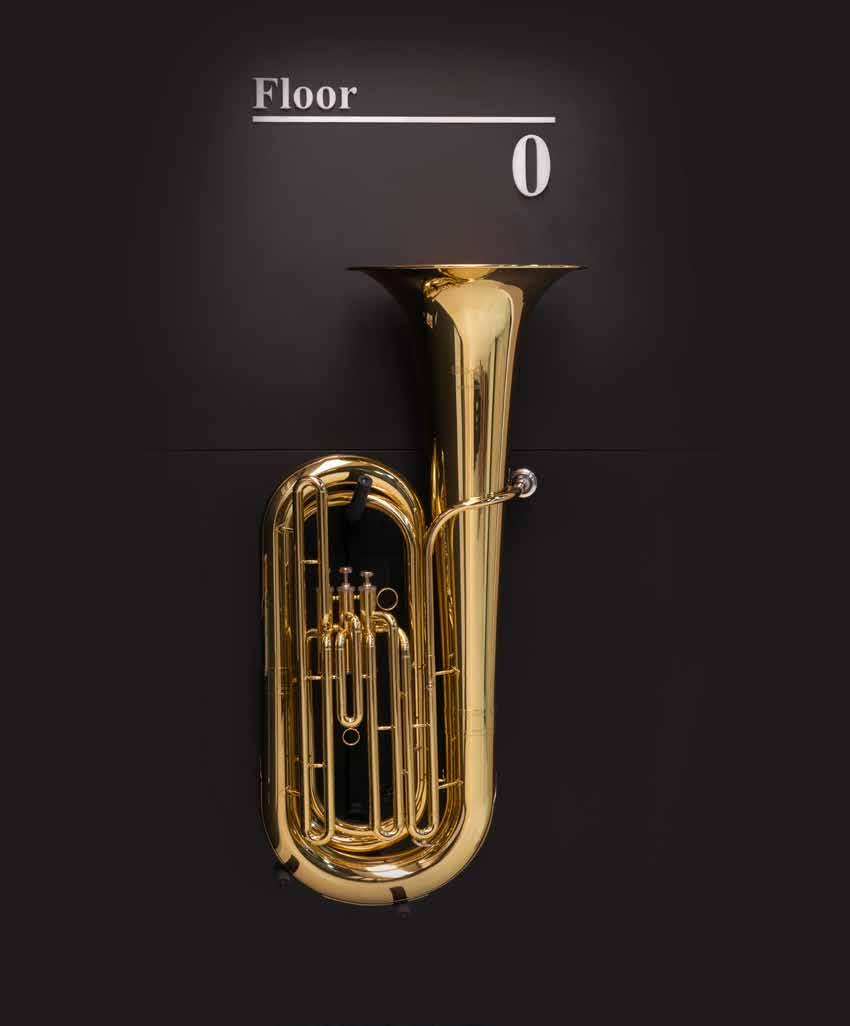
93
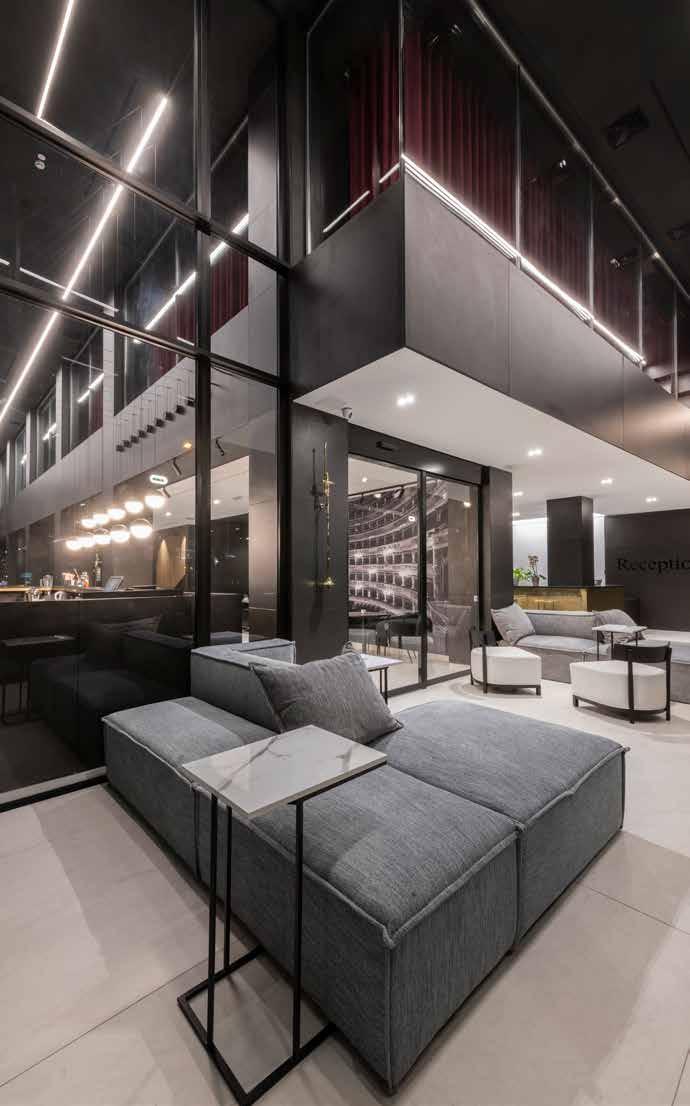
94
Hotel Verdi is our very latest hotel project to be completed and which EM Architects spearheaded from the demolition of the ex-Milano Due Hotel to concept stage through to completion, whereby we focused on the external architecture element and morphology together with the design detail of the building in order to provide unique experience of anyone who entered the building.
Achieving this was not as easy. It required considerable design iterations and careful detailing necessitating custom-made furniture especially due to the constrained site limitations. To fulfil the true potential of the space, we considered a range of factors, namely, the site context, the brief, the intended use and overall experience of the building as seen by the public, the hotel guests and just as important, the hotel employees. We analysed each of these key factors and studied their inter-relationship to effectively respond through the use of materiality, spatial layout, colours and detailing.
On the materiality factor, we chose materials that are appropriate for the intended use of the building by employing elegant finishes to meet the class of a 4-Star hotel but, that are considered heavy-duty to sustain constant use by hotel guests and maintain the element of timelessness without compromising on quality and appearance. To achieve this, apart from design specifications, we set up a sample room to test all the materials. This exercise allowed us to create a more efficient end-product and maximise on the practicality and spatial aspects of the room. We wanted to ensure that the workmanship and quality was reached in accordance with the design drawings and specifications and this is where our team constantly monitored the work on site, held numerous inspections, drew up snag reports and instructed rework and changes until the specified design and quality was reached. This is a contributing factor towards having a superior finish of high quality and extending the longevity of the finish building.
We didn’t limit materiality to furniture and finishes only. We extended this by introducing a series of brass musical instruments that are installed throughout the reception, lobby and restaurant and that immediately immerse the building’s users into the musical theme of Giuseppe Verdi.
We gave particular attention to the spatial layout building on the architectural layout of the building that took into consideration the natural light and views overlooking the harbour and outwards to Valletta’s skyline. The room furniture, in particular the guest room beds, are laid out such that guests look outwards towards the view and the open sea as opposed to the inner harbour view. In addition, we laid out the public amenities to have the internal uses mainly across only two main floors (ground floor and level 1) whilst the pool deck at roof level in order to consolidate the spaces.
To respond to the need to incorporate elements of Verdi, the design makes use of greyscale colour palette with accent colours, namely, red and brass. The greyscale represents an element of time and takes one back to the peak of Verdi’s life around the mid-1800s when life was seen ‘in black and white’. The introduction of the red accent colour represents the red curtain employed in the opera theatres where Verdi played. This colour is incorporated into the project namely in the guest room chairs and the meeting room curtains. We then introduced elements of brass by wrapping the vertical elements of the reception, main bar and food bar to represent the musical instruments and namely, the Aida Trumpet designed by Verdi himself. We also designed the space to integrate actual musical instruments. All these factors provide a strong and realistic visual connection with the theme of the hotel.
The project design pays close attention to the details such as the interior and exterior lighting, the connection of different materials and elements and the treatment of edges to elevate the overall design and create a sense of coherence. Moreover, the project effectively responds to the client’s needs, to the site context and limitations together with the intended use. As a result, the design not only meets functional requirements, but also enhances the experience of the building’s users whilst adding value to the built environment even when see from outside.
95

96

97
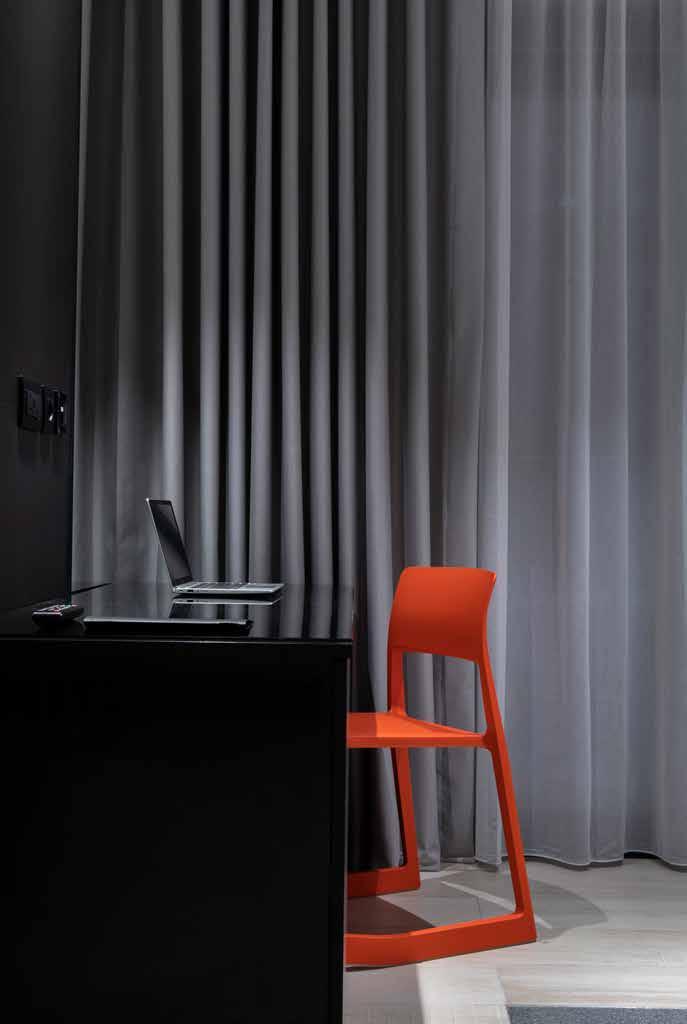
98
Most hotel designs, especially locally, do not seem to follow any particular theme, but simply aim to create a good-looking interior finish. On the contrary, Hotel Verdi challenges that norm. The client’s wish was to expose the theme of Verdi especially since he might not be as famous as, for example, Mozart. Therefore, this created a challenge in itself to diligently compose an interior design that brings out the theme of Giuseppe Verdi, his music, life and compositions but, without going overboard. The theme itself coupled with the chic design provides that element of surprise.
One will understand that achieving this in a subtle was not simple feat. The colour scheme chosen was a grayscale colour scheme to tie the guest back to the time period of Verdi around the mid-1800s when life was seen ‘in black and white’ but introduced a red accent colour (linked to the opera theatre curtains and décor) together with brass (linked to the musical instruments). This colour scheme, that of a monochrome concept with soothing mute grey colours was also chosen to create a tranquil effect within the building suited on the busy Gzira stand, with playful accept colours included to provide a contrast.
We introduced a series of musical instruments within the lobby, reception and restaurant, including the Aida trumpet which Verdi himself designed together with a double-height library featuring miniature musical instruments and books on Malta, Verdi and music. These aspects provide uniqueness and originality, standing out from the hotel design standardisation and that allows the project to showcase creativity, individuality and calls on the user to engage with the design.
Our attention was not only focused on the hotel guests but also on the employees and ancillary spaces such as the back-of-house areas, offices, bathrooms and staff kitchen. The office furniture is ergonomically designed to add additional comfort and the spatial layout allows for easy manoeuvring.
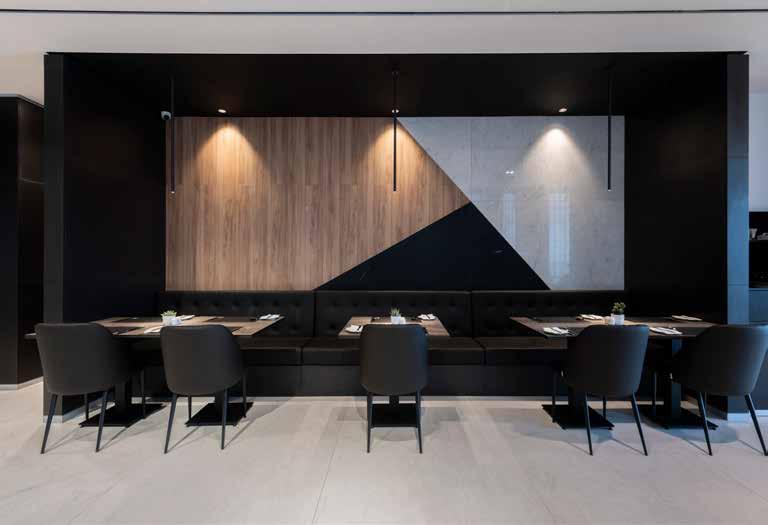
99
The staff kitchen was also designed to allow for a space for employees to take their break with access to the internal yard. Moreover, the reception and restaurant breakfast bar furniture was designed with different height working areas allowing the hotel management to employ people of all needs that will feel comfortable working within the environment.
A designer’s challenge is always met when trying to incorporate the building’s services into the design. The major area of concern was the internal yard which needed to be used to pass ducts and a number of pipes and services. The space was carefully designed to conceal all the services especially since some guest rooms overlook the space. The design needed to take into consideration the maintenance needs of the services and the overall aesthetics of the internal space. Therefore, we introduced a cladding system that was specifically designed to have perforated sheets allowing for the ventilation of the services and that are easily disconnected from the substructure to allow for fast access to the services by the maintenance team. The colour scheme followed on the grayscale colour palette introducing the black colour only on the window returns, the grey colour to represent the hotel logo and predominantly used the white colour to allow for natural light to be reflected throughout the internal yard more easily and keep the feel of the space as large as possible.
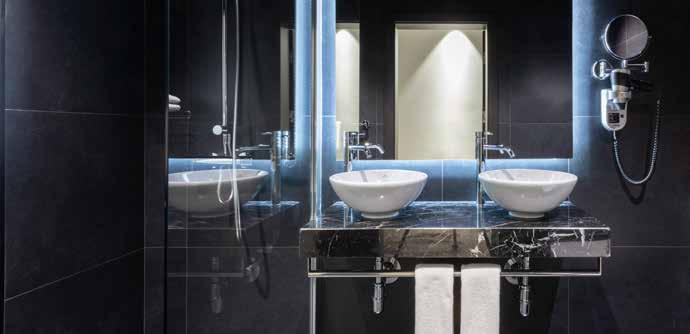

100
Through detailing, the design sought to achieve practicality and optimisation of the limited space while at the same time avoiding common trends and choosing good quality workmanship and materials. We believe these to all be important elements in the overall composition of the building’s design but especially, in the lasting impact and timelessness for the years to come.
The design’s originality, concept and uniqueness evokes a connection with the building’s users with the aim of the design and space being more distinguished than the norm and positively memorable.
From design stage through to civil construction, fit-out and the finishing stage, the project’s design sought to take advantage of today’s technology and produce a building that is respectful in terms of sustainability and the environmental impact. We felt that breaking new ground shouldn’t be limited to the building’s material and visible items and also focused heavily on the overall street elevation, not only on aesthetics but also on sustainability. We introduced a ventilated façade system which provides a marble cladding is seen externally, but also offers numerous benefits which are not visible to the eye but which include in particular increased thermal insulation and reduce energy usage. In fact, we looked at sustainability from the initial design staged to ensure that the new building, which substituted an old and dated one, would have a low carbon footprint. We introduced thermal insulation in both the walls and the ceilings, implemented a Latento hot water system which provides a 48% reduction in running costs when compared to other similar hot water systems; chose apertures of the height quality, left a void underneath the entire roof pool desk to eliminate thermal transfer into the underlying rooms, to name just a few examples.
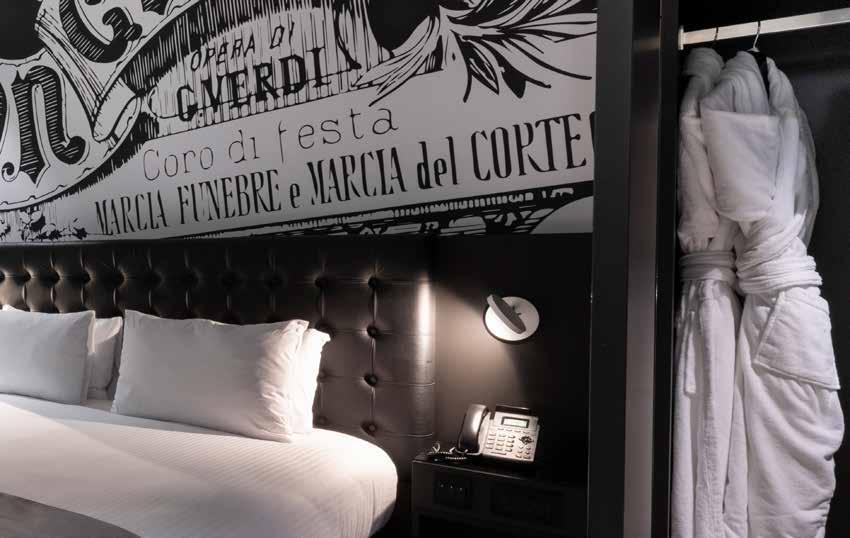
101

102
As a result, we feel that here we implemented a design which not only meets functional requirements, but also enhances the experience of the building’s users whilst adding value to the built environment even when see from outside.
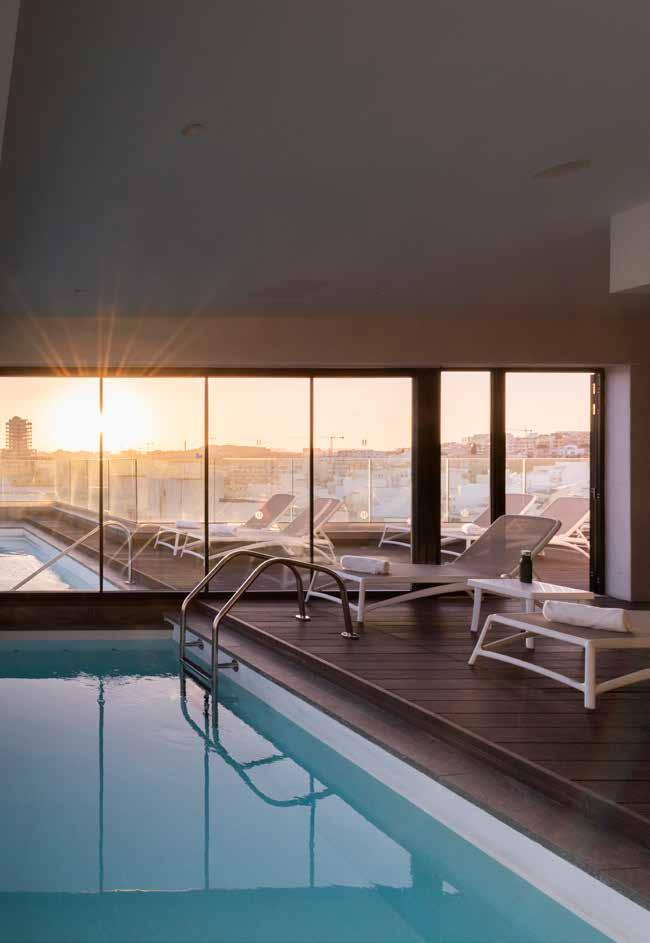
103
Successful Entrepreneur, Talent Manager, and Creative Director

104
Isaak Grech Fenech
The road to entrepreneurship may be rocky but the rewards are more than worth the effort especially when starting on this road at an early age. And who better than Isaak Grech Fenech can share with us the benefits of being a young entrepreneur focused on the creative arts?
He is young, focused, creative, ambitious and uncompromising. But he is also warm, bubbly, with a smile and a laugh that lights up a room and comes through in every conversation you will have with this young man. A true champion of the term; “where there is a will, there is a way.”
In 2017, while still in high school, Isaak co-founded Wicked Events with two of his classmates. Wicked Events is a teen event that caters to attendees between the ages of 13-16 years old. Under Isaak’s leadership, Wicked Events had its first international festival in 2019, with headliner HRVY. The event was sponsored by the Malta Tourism Authority.

Unfortunately, the COVID-19 pandemic impacted Wicked Events, but Isaak quickly pivoted and opened one of Europe’s first content houses, Clubhouse Europe, in September 2020. The content house featured nine local Maltese girls as talent, and in Q1 of 2021, Isaak and his business partner, Luke Bedford, signed four international influencers to join the house. In the summer of 2021, Isaak, Luke, and their Clubhouse Europe male talent went to Clubhouse Beverly Hills (Clubhouse BH) for an exchange experience.
Today, Isaak exclusively manages Gage Bills and talent like Just Boggi, as well as executing successful campaigns for designer, Charles and Ron. Furthermore, he is now ready to take on a new challenge following the issuance of his O-1 visa, as he will step in as the creative director of XO Team, the biggest social media content house in the world.
Isaak’s dedication to creating unique and innovative experiences has made him a recognized star in the creative industry, and his success at such a young age is a testament to his creative skill, expertise, and vision. He is certainly one of Malta’s youngest and most accomplished entrepreneurial ambassadors in the field of talent management and creative direction. An example for the young generation to look up to. An example of what one can achieve with determination, ambition and focus. An example that the sky is the limit!
105
Young Entrepreneurs are on the rise. While the concept of one day finally being your own boss has been around for a long time, it’s the younger generation that’s increasingly successful at achieving this goal.
eS kills
FOUR PILLARS
Education - covering various aspe development of digital sk ills and competencies from the prima ter tiar y levels and vocational le education and viewing it as pa ecosystem including studen parents as well as the indust Society – covering the diverse se Maltese society and the digital competencies needed for them digital interaction and communic
GOALS
o meet the ket demand within the tion and within the private
Society of digital Public Administration pursuing its digital transformation and its online public ser vice deliver y, in line with the Public Ser vice Strategy.


Enterprises being increasingly willing and able to adopt digital transformation, as a means for them to thrive in an increasingly competitive digital world.





The educational system evolving fur ther at all levels so as to ensure readiness to the needs of current and future digital sk ills.
Having more ICT professionals available on the local labour market

GOVERNMENT ENABLERS
Collaboration needed to ensure consistenc y, coherence and avoidance of Leadership and shared responsibility through measures that need to be taken that need to be under taken, as appropriate.
Benchmarking needed to assess, evaluate and qualify progress in goals and outcomes within various aspects of the digital sk ills domain. Funding, including their source – local or other wise - necessar y to sustain the various related initiatives and activities.
Focused strategic alignment themes or sectors, a number of which are of a national scope.

C OLL AB O R A T IO N L E AD ER SH I P & SH ARE D RE SPONS IB I LIT Y BE N C H MAR K I N G F U ND I N G S TR A TEGI C A LI G N ME N T
e
s
eSkills Malta Foundation N a tion a l C oa liti o n f o r D igit a l S k ills an d J o b s ICT P R OF E SS I ONA L S W O R KFO RC E SO C I ET Y E D UC A TI O N National eSkills Basic Skills Advanced Basic Skills Digital Content Skills IC T Specialists Female IC T Specialists ENT Providing Training IC T Graduates 6.5% 3.9%
26% 19% 4.90% 4.50% 71% 66% 28% 20% 35% 26% 61% 54% Ranked 6th from 27 Member States in the European Union Malta DESI 2020 DESI 2021 DESI 2022 DESI 2022 1a1 At least basic digital skills % individuals 1a2 Above basic digital skills % individuals 1a3 At least basic digital content creation skills % individuals 1b1 ICT specialists % individuals in employment aged 15-74 1b2 Female ICT specialists % ICT specialists 1b3 Enterprise providing ICT training % enterprises 1b4 ICT graduates % graduates NA NA 61% 2021 54% 2021 Malta EU NA NA 4.6% 2019 11% 2019 26% 2019 6.9% 2018 NA NA 4.4% 2020 11% 2020 28% 2020 6.0% 2019 35% 2021 71% 2021 4.9% 2021 26% 2021 28% 2020 6.5% 2020 26% 2021 66% 2021 4.5% 2021 19% 2021 20% 2020 3.9% 2020
DESI 2022 COMPARISON MALTA - EU HUMAN CAPITAL
SO CIET Y A W A RE N E S S P UB L IC A D MI N I S TR A TI O N D IGIT AL TR ANSFO RM A TI O N E N TER P RI S E D IGIT AL TR ANSFO RM A TI O N E VO L V I N G E D UC A TI ON SYS TE M M O RE ICT P R OF E SS I ONA L S
EU Average eSkills eSkills Malta Foundation www /ESkillsMalta @eSkills_Malta eskills.org.mt 106
MALTA’S NATIONAL CENTRE FOR CREATIVITY
Spazju Kreattiv is a programme of creative arts and cultural events happening primarily across Malta and Gozo. Established by Fondazzjoni Kreattività in the year 2000, our home is in St James Cavalier, Valletta, a 16th-century fort converted into the National Centre for Creativity. We host a range of visual arts exhibitions at our gallery spaces, performances at our theatre in the round, films at the only arthouse cinema on the island, workshops in our studios, an artist-in-residence programme, and tailored events for children and their families under the ŻiguŻajg strand.
www.kreattivita.org

+356 2122 3200
Spazju Kreattiv
St James Cavalier Castille Place, Valletta VLT 1060
#SpazjuKreattiv
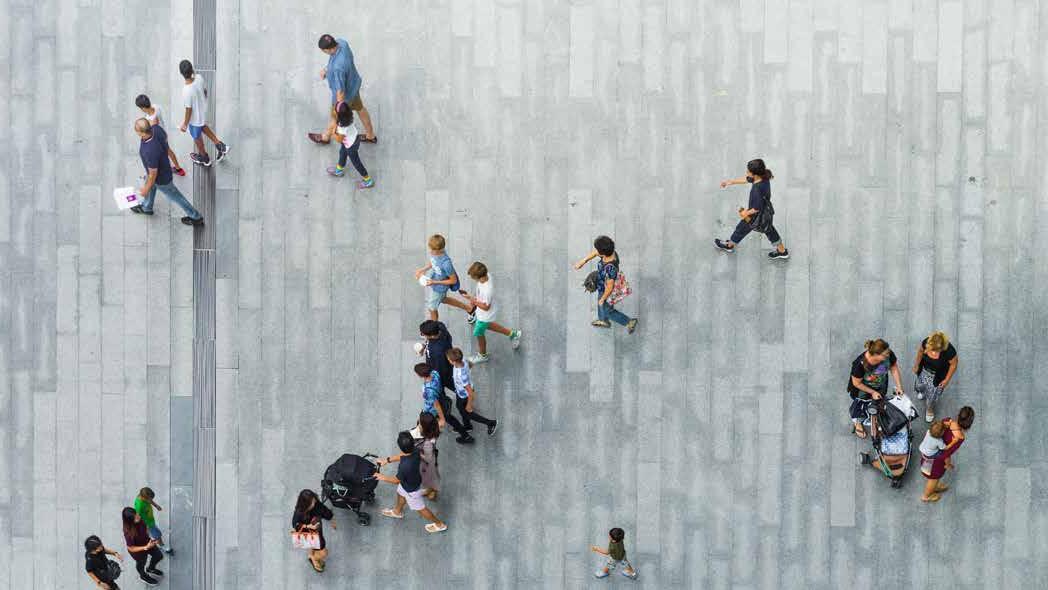


Sustainable Green Open Smart Mobility Living Spaces Cities A better quality of life www.lca.org.mt







d i a m o n d s i n t e r n at i o n a l m t



 Watch: Piaget lady’s - Polo Collection
Watch: Piaget lady’s - Polo Collection



















































































































